+44 20 7139 8644

THE HIGHEST STANDARDS, NOTHING LESS.
The Yacht Charter Test
At Island Sailing, we only do high standards. Our Operational team review hundreds of yacht owners and operators with thousands of yachts and put the best to the test, obsessing over every last detail. Only the best yachts make the cut for our clients.
How did we develop it?
With over 2 decades of experience owning, sailing and chartering yachts in destinations around the globe. We have worked in collaboration with expert naval architects, yacht designers, yacht and fleet owner operators, yacht captains, skippers and crews, private yacht owners and of course, regular sailors and recreational charterers. It all started with one simple question: what makes a perfect charter?
For best-in-class quality you can trust
As a client and guest, it means we’ve done the hard work for you. Out of thousands of yachts at hundreds of yacht bases and countless sailing regions. We’ve taken the hit-and-miss out of choosing. If it’s with Island Sailing, you can expect consistent, high-quality standards.
Our team of experts are just a phone call away
Remember how great it was when real people who knew what they were doing helped you plan your trips away? At Island Sailing, our expert team are here to support you and answer any questions you may have about your booking. No call centres, no sales representatives or outsourced ‘advisors’ we’re here to help.
ONLY THE BEST YACHTS
Island Sailing is a specialist yacht charter company and we don’t offer average boats. Say goodbye to endless scrolling through yacht listing sites – we have all of the best ones waiting for you.
YACHT CHARTER’S MOST METICULOUS TEST
We have a 5-stage charter test for all our yacht fleets, culminating in a personal visits from our charter team.
HOW DOES IT WORK?

Every time we launch a new destination, we systematically review all the yachts available there.

We visit the destination, spend time at the yacht base and explore the sailing area around it. We look at the practicalities, for example: where it’s located for travel, transfers and facilities and shops. It is a necessity that the location will allow you to sail to the very best islands, ports, harbours and bays in the area.

We then systematically review every fleet of yachts and shortlist the specific models that are the most modern, with great design and from the best award-winning yacht manufacturers. We select only those that are best suited for our clients to charter in great locations, and the best fit for sailing and exploring top islands and coastlines in that region.

Once we have shortlisted the best yachts available, we begin the process of checks on the fleet operational management, standards and conformity. These are our up-and-coming yachts to compliment our long standing select yacht fleets. From small boutique collections to larger fleets who we have partnered with for many years, we work together to provide the best quality yachts and service available in the industry.
We have a robust selection process which involves checks at every level from ownership and management level to the yacht maintenance programs. We thoroughly check standards of yacht base staff from engineers, to sail makers to domestic staff, as well as the yacht base management office-based teams who will handle charter administration and welcome for our clients when they arrive at the yacht base.

For the final stage of the selection process, we will arrange a visit from our trained and experienced operational team for review and evaluation. We work behind the scenes to monitor and evaluate how the teams work with the yachts and customers and check the models and standards of the yachts. If they pass these tests then the next stage is an organised visit from us to assess quality, customer service levels, support and of course the standard of the yachts.
The standard of our Yacht Charter Testing includes ‘measurable’ criteria such as yacht layouts, equipment onboard, presentation of the yachts, maintenance and support capacity. We also include soft ‘feel’ criteria like the design aesthetic, the sociability of the space and extra amenities. These criteria represent Island Sailing’s “Science Behind The Perfect Charter”.
To find your perfect yacht charter, contact us and speak to our charter team.
How Can We Help?
Call +44 20 7139 8644 , email [email protected] or complete our enquiry form
- Name * First Last
- Email address *
- Name This field is for validation purposes and should be left unchanged.
About Island Sailing
A British company based in London, we are enthusiastic and inimitable team with many years of first-hand experience sailing in the beautiful destinations we offer. We are passionate about creating unforgettable experiences for all our clients offering the most idyllic yacht charters in the best sailing locations with the widest choice of thoughtfully selected modern yachts and catamarans.

| Island Sailing Limited, Registered in England: 7640783.
LIMITED TIME OFFER
Yachting World
- Digital Edition

Is this the best way to test a yacht before you buy?
- Will Bruton
- November 20, 2023
Chartering the type of yacht you are thinking about buying may be the perfect way to test a yacht works for you before you make the leap

A typical first charter holiday, perhaps on a production boat in Greece or Turkey, holds a special place in most sailors’ memories, even if they go on to own their own yacht and sail further afield. A charter gives a taste of the responsibility, freedom and possibilities that owning a yacht might unlock.
The yacht you hire, though, is rarely what you’d choose to own. Charter yachts are often built with mass appeal in mind, packing in berths and cabins, and rarely geared for performance or living aboard full time. However, chartering the model of yacht you are seriously considering buying is very worthwhile, and something many don’t even realise is possible.
Swan is one company which offers charter as a ‘taste’ of ownership. Nicolò Telese, charter manager, says: “Chartering a Swan allows the client to explore a variety of destinations, but also is a way to start the sailing journey. Some of our owners start by chartering a Swan to then build their dream yacht.”
Spending a week or more on board can help you evaluate whether a yacht will fit your needs in the long term, and help specify it to suit.

Nautor Swan offers charter of yachts from 45-130ft across a range of models, both racing and cruising, in locations including the Mediterranean and Caribbean. Photo: Maurizio Paradisi
Changing customers
Victor Jeunemaitre, Outremer’s commercial director, notes that in a changing market inexperienced customers are putting less time into their decisions when commissioning builds. “As a company building high performance catamarans , it’s important to us that customers understand what they are ordering,” he says. “It is not purely transactional at all.
“Ultimately, our relationship extends well beyond delivery, so we want it to be a good relationship, and that means ensuring an Outremer is right for them, both when they sign the cheque and when they are halfway around the world. In some cases, customers have ordered on the basis of chartering another brand of catamaran a couple of times, but the adventure they have planned is much bigger.
“We find that even a good test sail highlights clearly how we are different to most catamaran builders on the market, but also what we are not. For example, we actively encourage a relatively simple specification, while others are keen for owners to specify many options. Our hulls are narrower than most. They are preferences not only leaning towards performance, but also because we know that a good bluewater adventure is often underpinned by a boat that is relatively easy to maintain far from home.”

Photo: Robin Christol/Outremer
Outremer does not have a dedicated charter operation, but instead relies on an ever-expanding network of loyal owners who charter to those that want to try before they buy.
“We don’t have yachts permanently available for charter, instead we direct customers to existing owners who perhaps charter for a few weeks a year. We have a wonderful family of owners who love their yachts.
“A little unusually, charters on an Outremer are always with a skipper on board, partly due to the performance they offer, but that’s a great opportunity to learn and immerse yourself in the boat and how it all works. Particularly, it’s an opportunity to get the boat going fast and to really see what it is capable of.
“Charter can also be invaluable once the contract has been signed to help with final specifications and to get you used to the boat before you even own your own.”
Article continues below…
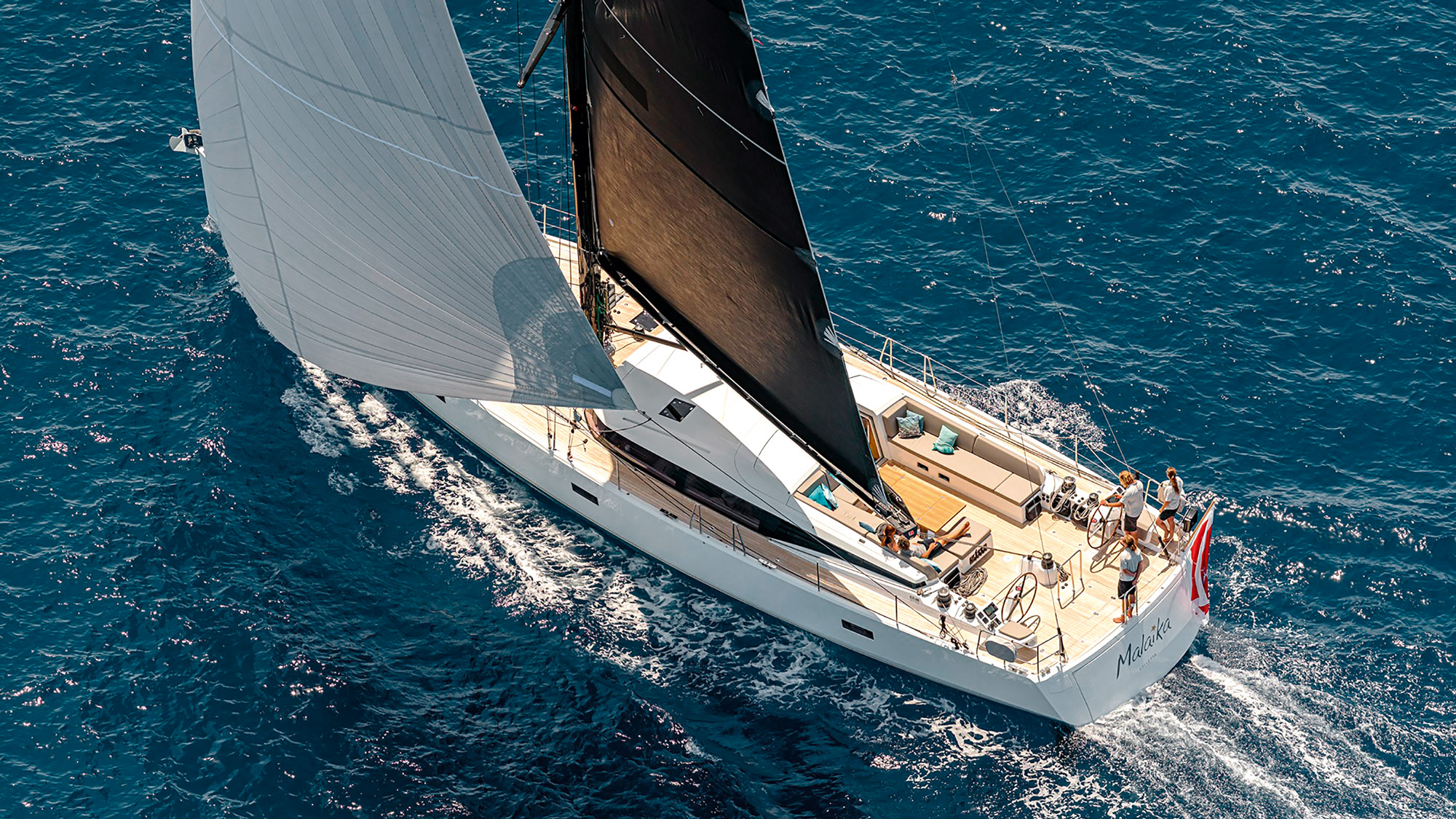
Second hand boats: buying big charter yachts
Small enough to sail without a large crew, but big enough to charter, pocket superyachts between 55-100ft have become increasingly…

Second hand boats: buying an ex-charter yacht
Yacht charter companies increasingly own new yachts for only a few years, selling off sooner to ensure they can offer…
Thorough evaluation
A similar case is made by Stuart Abernethy, X-Yachts GB’s general manager, based in Hamble. He explains they go to great lengths to encourage a charter:
“We say to serious prospective buyers that we can take them out for a few hours on the Solent, but to understand what an X-Yacht is about, a charter makes for a comprehensive chance to see if it is what they are looking for.
“Our offer of being able to charter at the yard in Denmark means a customer can see yachts in build and then experience a week aboard. It’s also invaluable for shaping the specification later. Also, a charter in Denmark does not always get perfect conditions, which is actually good; you get to see the yacht in the real world.”
X-Yachts Denmark’s charter operation is geared towards prospective buyers rather than the general charter market, meaning that the latest models are available.
The company also offers charters in Greece, which gives current owners the chance to sail somewhere different, or to experience a different model as larger X-Yachts are available.
“In general, the ideal would be to charter prior to purchase and then once the order is placed in order to help specify the yacht. In each case it’s going to make the customer so much more informed about what they are buying.”

A chance to experience sailing with pro crew. Photo: Oyster Yachts
Invaluable insights
Fiona McCarthy spent several years as a general charter broker, but now heads up the Oyster Yachts charter operation. Those considering buying an Oyster often charter first.
“Clients who charter with us that are thinking about buying are generally at two different stages. Either they are thinking broadly about buying a yacht, or they are about to sign –or have perhaps just signed – a build contract with us,” she says.
A charter presents an opportunity to evaluate the reality and what they might like to do with the yacht, as well as get a week or more of insights from a professional captain.
“I had a client quite recently that was considering buying an Oyster with a view to doing the Oyster World Rally. However, their sailing experience was limited to sheltered waters, so they chartered for two weeks in the Caribbean. It gave them the chance to sail in stronger winds, with some offshore conditions, while learning a lot from the crew about the size and model of yacht they were planning to order.
“They left able to make a much more informed decision,” says McCarthy.
For other clients it’s an opportunity to sail a larger yacht than they have before, and prove to themselves they’re up to handling a bigger yacht. “One client chartered a 575. They spent the whole week actively sailing, improving their boat handling skills and by the end of the week were sailing her on and off anchor; helping them make the step up to a bigger yacht,” she adds.
“Also, when it comes to stepping up to a fully crewed Oyster like the 885, charter can demonstrate how a yacht with entirely separate crew accommodation provides the privacy they seek, giving an experience of what the dynamic will be like on board.”
Those chartering with a view to buying are aiming to get a lot out of their time; it is not just a holiday. McCarthy says that getting the most out of it is down to sharing as much information as possible.
“The more you tell us, the more we can plan a charter that’s right for you. We’re well versed in matching the right boat, the right crew and the right itinerary to a prospective purchaser. One real advantage is that our crew know the yachts they run very well, so they have lots to pass on and are passionate about what they do and are happy to share it.”

Magnus Tallqvist ordered an Outremer 52 after chartering multiple catamarans to compare
A try before you buy case study
Magnus Tallqvist recently took delivery of the first Outremer 52, but his journey to signing the build contract involved a lot of chartering to learn exactly what he wanted.
“We were originally monohull sailors, with a 40ft Saare here in Sweden – a great boat. But with a plan to sail further in warmer climes, and eventually to circumnavigate, we started to look more broadly. That included chartering catamarans.
“What really opened our minds to the idea was an article about the Outremer concept, though it would in fact be a while before we sailed one. We started by chartering through Navigare Yachting, who owned quite a lot of different types.”
Tallqvist set up charters in a variety of locations for one to two weeks. “We sailed Lagoons, Nautitechs and Catanas, each for a week or more, often off season. As soon as you are living aboard you start to really learn and figure out if you can see yourself aboard long term. Some of them simply wouldn’t go well to windward.

Less than perfect weather can actually be a positive as it’s a more realistic experience. Photo: Outremer
The Nautitech Open 40 however was a good compromise of space and performance.
“Some had stowage high up in each cabin, which isn’t up to holding the volume or weight you would have when on board long term and easily breaks as the boat gets into heavier weather. On one we found that when it rained the cockpit got soaked because of the way the roof was moulded. These are all things we wouldn’t have learned from a day sail.”
Tallqvist and his wife were weary of hearing existing owners’ views of why their choice was the right option. “Very few people, having spent so much money, are likely to call themselves out for making the wrong decision, or to highlight faults with what they have chosen. There is no perfect yacht and so much about what you choose is down to you personally.
“The Outremer is geared to performance, not internal volume, nor is it as luxurious as many other catamarans in terms of kit on board, so it too is probably not the right yacht for everyone. While the Outremer we ordered was in fact hull No1, we made sure to sail the 45 and 51, finding a builder that made something that was right for us. We had confidence the 52 would be as good or better.
“For anyone thinking about buying, I’d really encourage them to charter as it’s a lot of fun and you learn so much along the way. See it as part of the process. The range of what’s available on the market is huge and it’s hard to differentiate and figure that out without putting the time in to get it right.
“A boat show is a somewhat artificial environment in that sense and, having now sailed quite a few catamarans, there are some I wouldn’t take across the Atlantic. A charter gives you an idea of the range of the market in terms of quality and the level of confidence they do or don’t inspire.”
If you enjoyed this….
Yachting World is the world’s leading magazine for bluewater cruisers and offshore sailors. Every month we have inspirational adventures and practical features to help you realise your sailing dreams. Build your knowledge with a subscription delivered to your door. See our latest offers and save at least 30% off the cover price.
Make an Enquiry

- Yacht Sales
- Destinations
- About Ahoy Club
10 Things to Check before Chartering a Superyacht
There are a few steps involved in chartering a superyacht, but it doesn’t need to be overwhelming. Your focus should be on choosing your yacht, finding your destination and planning how long you’ll be away. However, there are still a few admin details that every charterer must face.
Ahoy Club want to make your charter experience as effortless as possible. To help with this, here are 10 details it’s important to check before finalising your superyacht charter.
CHOOSING YOUR YACHT
Here are 3 important questions to ask before settling on your luxury yacht.
Do you prefer motor or sailing yachts?
With thousands of yachts to choose from with Ahoy Club, you need to find some way to narrow your search. We have motor yachts, sailing yachts, catamarans and gulets on offer. Motor yachts are ideal for first timers or anyone with little experience in sailing. Sailing yachts are an incredible experience but they do move with the wind. If you don’t enjoy the sway of the sea, sailing yachts aren’t for you. Learn more about classic and modern sailing yachts in our previous blog .
Where will you be cruising?
From a quintessential Mediterranean cruise to an off-the-beaten-path visit to Africa or Antarctica; the whole world is accessible via charter yacht. Choosing where you want to charter is important as each yacht has certain destinations it cruises. Browse the Ahoy Club charter page and add destination filters to see the yachts specific to your route.
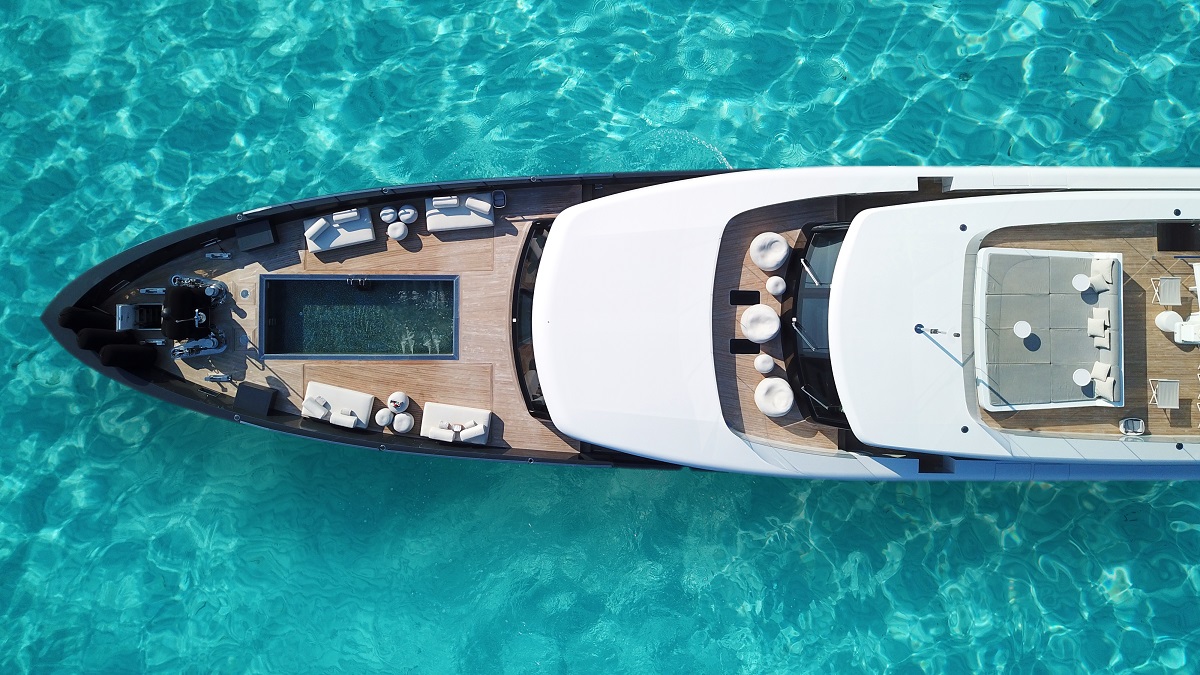
What toys will my yacht have?
There are plenty of activities to fill your time on a luxury yacht and more than a few toys to play with. Every yacht is different and will have its own selection of toys on board. Common toys include jetskis, waterskis, snorkelling gear, paddle boarding and scuba diving gear. If there is a particular toy you’d like that is not available on your selected yacht, they can also be hired.
What will the weather be like?
Once you know where you’ll be going, you can decide when is the best time to go. Every destination has a peak season when yachts may be booked out. Book early to avoid missing out and make sure to check the weather if you’ll be going out of peak season.
ADDITIONAL COSTS
Are you liable for any vat charges.
The VAT (value added tax) is a compulsory consumption tax which applies to the products and services used during your stay. The rates are decided by the country or countries which you will be chartering within. Italy and France both recently updated their VAT rules, which you can read about on our blog. Before chartering, find out what VAT charges you will be liable for and if there are any discounts available to you.
Are you aware of APA?
The APA (Advanced Provisioning Allowance) is a sum of money that is used to cover the cost of fuel, communications, port charges, food, alcohol and other requests while on board. It is not part of your charter fee. It is calculated as a percentage of the charter fee, normally 30%. Your crew uses these funds to pay for all chartering charges on your behalf and to fulfil any special requests you may have while on board. Any APA money not spent will be refunded to you, following the end of a charter. On the other hand, if expenses exceed the APA, you will be expected to reimburse the yacht as you leave the charter.
AFTER BOOKING
Here are important details that your dedicated Ahoy Club Concierge Agent will arrange with you leading into your charter.
Do you prefer formal or casual service?
Every luxury yacht comes fully crewed, but you still get to decide how you’d like to be served by your crew. If you prefer a formal crew with fresh pressed uniforms and silver service – this can be arranged. If you’re more relaxed around a casually dressed crew with laidback service – we can make these preferences known. Similarly, if you prefer to relax in privacy with no service crew in sight, or always prefer someone in sight – Ahoy Club will ensure the crew cater to your preferred service style so that you enjoy your trip to its fullest.
What style of dining would you prefer?
Dining on superyachts is one of the major highlights of your entire trip. Make sure it’s everything you dream of by specifying your favourite cuisines with the chef. If any of your group have dietary restrictions, it’s important this is communicated early. The more information you can provide, the better your chef will be able to excite your palate throughout your stay.

What will you eat and drink on your charter holiday?
Every detail of your yacht charter is personalised to your preferences and requirements – including your dining options. Your Ahoy Club Concierge Agent will work closely with you prior to boarding to understand your guests preferences; like favourite cuisines, cooking styles, dietary requirements or lifestyle choices. We can cater to gluten free, vegan, vegetarian and many other dietary needs. We’ll also ensure your favourite alcoholic or non-alcoholic beverage brands are waiting for you on board (or the closest substitute should your favourite not be available). We’ve helped many charterers celebrate special occasions in style and would be happy to arrange a special event for you too.
Can you change your itinerary?
Part of the joy of luxury yacht charters is the ultimate freedom they provide. Within reason, you can take your yacht to any destination and even change routes during your journey. Our concierge team can help answer your questions about the ability to alter routes; such as whether this incurs extra charges or will extend your stay which increases the charter fees.
Ahoy Club: the world’s most premium charter company
Sign up to Ahoy Club for exclusive member discounts, insider tips and a personal concierge service to help you after booking your yacht. Our aim is to make yacht charters simpler, faster and more fun for everyone involved.
- Inquire Now
- YACHT SEARCH
- Motor Yachts
- Sailing Yachts
- $1 – $25,000 Yachts
- $26,000 – $50,000 Yachts
- $50,000 – $100,000 Yachts
- $101,000 – $200,000 Yachts
- $200,000 – ∞ Yachts
- Turks and Caicos
- Virgin Islands
- Spain & Balearic Islands
- New England
- Tahiti & South Pacific
- More destinations
- Charter Advice
How much does it cost to charter a yacht?
There are many things to consider and first time charterers can be left confused, that's why we've created a comprehensive guide to yacht charter prices (with a checklist).
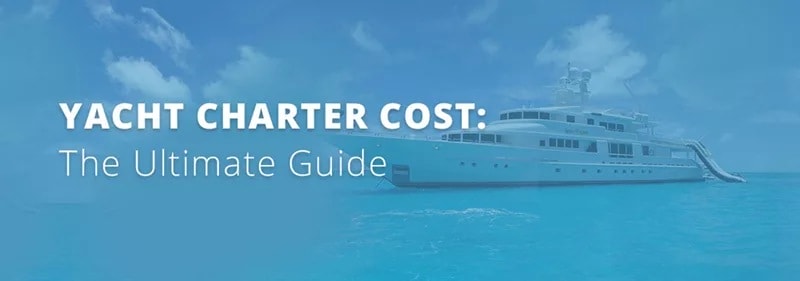
The good news: It’s easy to grasp the basics of yacht charter pricing. And with one of our experts in your corner, we can help you more accurately estimate the cost of your next once-in-a-lifetime vacation.
The cost of a yacht charter is dependent on a number of factors, including the type of yacht, the charter destination, local taxes, and the base cost. (If the yacht has a celebrity owner, well that too, can add to the cost.)
Therefore, yacht charters have a wide range of base prices. That’s why charters can cost from $10,000 per week on smaller sailing yachts and catamarans, up to $150,000+ per week on the most luxurious motor superyachts.
What else can you expect to pay? This overview – a part of our planning resource, the Charter Advice Guide – offers an in-depth look at charter yacht costs.
Yacht Charter Price Structure: “All-Inclusive” vs “Plus Expenses”
In the world of yachting, two types of crewed yacht charters are available to you – “All-Inclusive” and “Plus Expenses” charter experiences. What do these terms mean exactly? Here’s a quick look:
- All-Inclusive Yacht Charters – Some charters (mainly catamaran and monohull charters in the Virgin Islands) offer all-inclusive rates. That means rates are based on the number of guests, and they include all food and drink, water sports, and fuel costs. Dockage and taxes, though, are usually charged separately.
- Plus Expenses Charters – Rates for larger motor yachts do not include running expenses, which must be paid separately. For these luxury charters, the base price is for the yacht only. Additional expenses, i.e. food, bar, fuel, dockage, port taxes, and other expenses, are charged separately. Most frequently, the running expenses are paid by an Advance Provisioning Allowance, or APA, which is typically 35% of the base price; this is an amount that’s paid prior to the charter.
Our chart below offers a quick overview of what’s included in both of these types of charters.

Average Yacht Charter Cost: Base Prices
What can you expect to pay for a catamaran, a sailing vessel, or motored yacht? Here’s a quick overview of the average cost to rent a yacht (not including extra expenses) for the most common types available:
Factors that Affect Yacht Charter Prices
Since charter yachts are privately owned, prices are set by the owner. This can explain, in part, the wide range of differences in price between boats of similar lengths. Yet, several other factors can significantly impact price, including:
- The Yacht – The year the boat was built, the builder, previous owners, and the boat’s selection of water toys can also increase the cost of a yacht. Boats can also develop a reputation, i.e. the largest or most luxurious, or having a famous builder or previous owner. Reputation can also affect pricing.
- Season – Prices typically increase in the high season – i.e. high summer in the Mediterranean or winter in the Caribbean – and decrease in low seasons.
- Destination – Your charter destination also plays a role in charter cost. For example, prices increase in areas without large charter fleets (i.e. the Galapagos), whereas Bahamas yacht charters, BVI charters , or Mediterranean yacht charter are priced more competitively.
Additional Costs Considerations on Yacht Charter
In addition to the cost associated with running the yacht and provisioning, there are a number of other costs that must be considered. These are the most significant:
Advanced Provisioning Allowance
The APA on Plus Expenses charters equals roughly 35% of the yacht’s base price. This is a fee that’s collected prior to charter, and it’s similar to an expense account the captain can access during the charter. At the end of the charter, you will receive a detailed accounting of your APA account, plus any unused APA funds in cash.
In the case of overages, you may be required to replenish the APA account during the charter. This can be done with cash, although many choose to set up accounts with their charter brokers , which can be accessed if requested by the captain.
Taxes and Value Added Tax (VAT)
Most boats – whether all-inclusive or Plus Expenses – will not include local taxes or a Value Added Tax into their charter rate. The charterer will be responsible for paying those taxes. Taxes range significantly by destination; here’s a look at some of yachting’s most popular destinations:
- The Bahamas – Tax: 4% plus 10% VAT
- BVI – Tax: between $6 and $16 per person per day, depending on the flag of the boat
- Croatia – VAT: 13%
- Florida – Tax: 6% for Broward County, 7% for Miami-Dade County
- France – VAT: 20%, however, 10% can be applied when an itinerary includes International Waters
- Greece – VAT: 12%
- Italy – VAT: 22%, however 6.6% (over 24m) and 8.8% (under 24m) can be applied when an itinerary includes International Waters
- Montenegro – NO VAT
- New England – NO TAX
- Spain – VAT: 21%
- Turkey – NO VAT
Charterers can purchase cancellation and curtailment insurance – which is similar to traveler’s insurance. This insurance can help cover costs if a charterer must cancel or shorten the charter. Charter brokers can help you weigh insurance options, and often offer several different options.
Crew Gratuity
While crew gratuity is certainly not mandatory, it is recommended, particularly if you were truly impressed with your charter experience. In general, crew gratuity is roughly 15-20% of the base charter rate, which is handed to the captain at the conclusion of your charter.
Delivery Fees
While these fees do not apply on most charters, you may be asked to pay delivery costs if you are not chartering in the yacht’s normal cruising ground. In most cases, you will only be required to cover the fuel for the trip.
Call Worldwide Boat today to learn more. Our Charter Specialists are here to assist you with every detail and explain all charter costs. Or read our Charter Advice guide for more information and tips for planning your charter vacation.
Showing 1–4 of 286 results
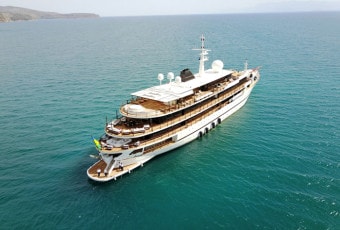
282.2ft / 84m
278.1ft / 83m
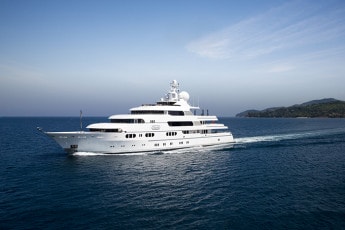
239.6ft / 71m
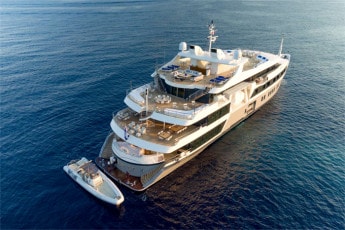
Serenity 236
236.3ft / 70m
Additional Charter Cost FAQs
What are standard private charter yacht prices?
There are a number of factors that affect charter yacht pricing. However, on average, a week-long private yacht charter costs anywhere from $10,000 on luxurious sailing yachts and catamarans, and up to $150,000 for superyachts.
What affects charter yacht prices?
There are several things that influence how much your yacht charter will cost. The type of vessel, charter destination, length of trip, base cost, time of year, and local taxes all make a difference.
How much does it cost for a crewed vessel?
Charter yacht prices do increase when hiring a crew along with the boat. At Worldwide Boat, we offer two types of crewed charter experiences: all-inclusive and plus expenses. An all-inclusive charter yacht includes accommodation for all guests, food and drink, water sport activities, and fuel costs – dockage fees and taxes are charged separately. A plus expenses experience accounts for just the yacht’s base price. Things like food, drinks, fuel, dockages, taxes, and other expenses are charged separately and are usually estimated to be about 35% of the base price.
What’s included in all-inclusive boat charters?
At Worldwide Boat, your all-inclusive charter experience includes a diligent and friendly crew, water toys, food, drinks, fuel, water and electric services, and occasionally diving experiences.
What are some additional charter boat costs to consider?
After finding a base price you’re comfortable with and evaluating your package, you’ll also want to consider delivery fees, crew gratuity, insurance fees, taxes, and Advanced Provisioning Allowance rates. If you are responsible for these fees, your crew will handle the necessary transactions on your behalf.
What does it cost to rent a 100- foot yacht charter?
This depends on what type of vessel you’re looking at and how long you’ll need it for. The average weekly cost of a 100-foot sailing yacht is between $50,000-100,000. A weekly 80-foot catamaran charter runs around $40,000-100,000, and a week-long 100-foot motor yacht rental is anywhere between $50,000-80,000.
Does the price to rent a yacht change depending on what type of boat it is?
Yes. Worldwide Boat offers sailing yachts, catamarans, and motor yachts. All of these vessels have different capabilities, but there are other factors that determine the price beyond what type of boat you choose. The year the boat was built, owner, availability of water toys, onboard amenities, and the ship’s reputation can all change how much the ship is priced at.
When is the high season for yacht charters?
The price of a yacht fluctuates depending on the season. A Mediterranean yacht charter cost rises in the summer and drops in the winter, whereas Caribbean boat charter prices are high during the winter and lower in the summer months.
How does my destination affect charter yacht cost?
The more remote an area is, the more expensive it will be to charter a yacht there. That’s because prices go up in areas that have fewer boats. If you were to travel somewhere like the Galapagos, which isn’t a typical yacht destination, you’d pay more than you would if you were traveling to the Caribbean.
How much do I tip the crew when reviewing my yacht charter expenses?
It’s not required that you tip your crew, but it is recommended and appreciated. If you had an enjoyable experience it’s considered polite to tip your crew anywhere from 15-20% at the end of your charter.
Go to Charter Advice
Set your search criteria to find the perfect yacht
- Alaska Australia Bahamas BVI Caribbean Croatia Florida France Galapagos Greece Indonesia Italy Malaysia Maldives Mexico Mediterranean New England Norway Spain Thailand Tahiti Turkey
- Motor Yacht Catamaran Sailing Boats
- 2 4 6 8 10 12 12+
Search by yacht name
Please use a modern browser to view this website. Some elements might not work as expected when using Internet Explorer.
- Why Charter Homepage
- Luxury Yacht Vacation Types
- Corporate Yacht Charter
- Tailor Made Vacations
- Luxury Exploration Vacations
- ALL 3,607 Yachts For Charter
- Motor Yachts
- Sailing Yachts
- Classic Yachts
- Catamaran Yachts
- Special Offers
- by Destination
- Yacht Reviews
- Destination Guides
- Inspiration & Features
- Mediterranean Charter Yachts
- France Charter Yachts
- Italy Charter Yachts
- Croatia Charter Yachts
- Greece Charter Yachts
- Turkey Charter Yachts
- Bahamas Charter Yachts
- Caribbean Charter Yachts
- Australia Charter Yachts
- Thailand Charter Yachts
- Dubai Charter Yachts
- Destination News
- New To Fleet
- Charter Fleet Updates
- Industry News
- Yacht Shows
- Corporate Charter
- Charter Advice
- Why Use a Yacht Broker
- Charter Costs Explained
- Add my yacht
- Yacht Charter Fleet

Comprehensive Yacht Reviews
Stepping on-board some of the world’s most esteemed charter yachts, as well as receiving privileged information from leading shipyards, the editorial team at yacht charter fleet produce reviews and features centered around what makes a superyacht particularly worth considering for your next luxury charter vacation. by combining in depth analysis with exclusive photographs, all of our reviews go beyond the brochures to provide you unparalleled insight of the charter fleet. read more.
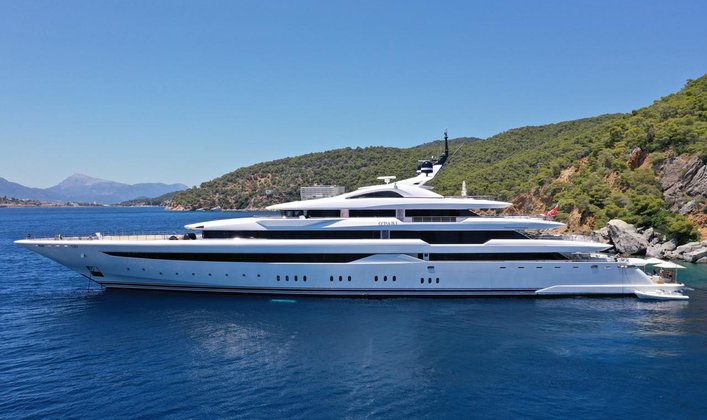
Page 1 of 3
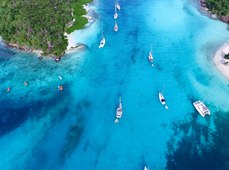
From secret hideaways to sought-after hotspots, the Caribbean is..
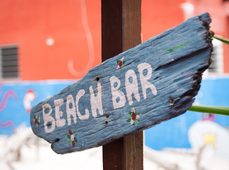
From upmarket establishments to ramshackle rum shacks, the Carib..
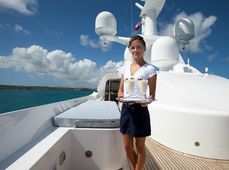
Cocktails and superyachts go hand-in-hand, view ten top choices ..
- See All Top 10
Latest News
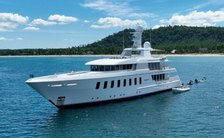
- See All News
Featured Luxury Yachts for Charter
This is a small selection of the global luxury yacht charter fleet, with 3607 motor yachts, sail yachts, explorer yachts and catamarans to choose from including superyachts and megayachts, the world is your oyster. Why search for your ideal yacht charter vacation anywhere else?

136m | Lurssen
from $4,309,000 p/week ♦︎
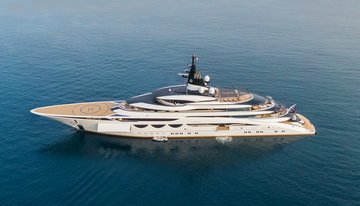
115m | Lurssen
from $2,801,000 p/week ♦︎
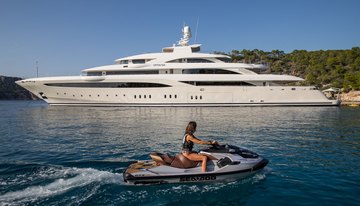
85m | Golden Yachts
from $969,000 p/week ♦︎
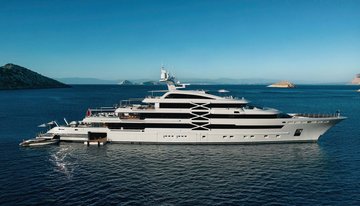
88m | Golden Yachts
from $1,185,000 p/week ♦︎
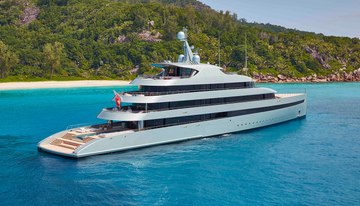
84m | Feadship
from $1,077,000 p/week ♦︎

93m | Feadship
from $1,508,000 p/week ♦︎
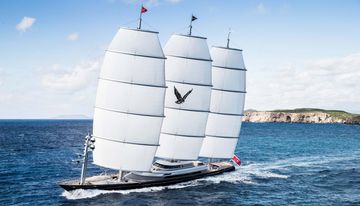
Maltese Falcon
88m | Perini Navi
from $490,000 p/week
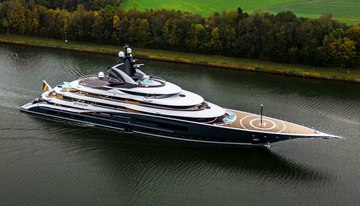
122m | Lurssen
from $3,000,000 p/week
As Featured In
The YachtCharterFleet Difference
YachtCharterFleet makes it easy to find the yacht charter vacation that is right for you. We combine thousands of yacht listings with local destination information, sample itineraries and experiences to deliver the world's most comprehensive yacht charter website.
San Francisco
- Like us on Facebook
- Follow us on X
- Follow us on Instagram
- Find us on LinkedIn
- Add My Yacht
- Affiliates & Partners
Popular Destinations & Events
- St Tropez Yacht Charter
- Monaco Yacht Charter
- St Barts Yacht Charter
- Greece Yacht Charter
- Mykonos Yacht Charter
- Caribbean Yacht Charter
Featured Charter Yachts
- Maltese Falcon Yacht Charter
- Wheels Yacht Charter
- Victorious Yacht Charter
- Andrea Yacht Charter
- Titania Yacht Charter
- Ahpo Yacht Charter
Receive our latest offers, trends and stories direct to your inbox.
Please enter a valid e-mail.
Thanks for subscribing.
Search for Yachts, Destinations, Events, News... everything related to Luxury Yachts for Charter.
Yachts in your shortlist
A Beginner’s Guide to Chartering a Yacht
By Chrissie McClatchie

With the pandemic driving a boom in superyacht charters , more and more people are taking to the water for their first yachting experience. But while some superyachts can cost more than a million a week to charter, you don’t need to outlay seven figures for your own yachting vacation.
Wondering what else you need to know before stepping on board for the very first time? We’ve turned to experts in the yachting industry for their insider intel on how to charter a yacht like a pro—from how much it will run you, to where to go, and well beyond. Read on.
Do I need a charter broker, and how do I find one?
It’s a charter broker’s job to match you with the right yacht and crew—and then take the lead in planning the entire experience. Professional bodies such as MYBA The Worldwide Yachting Association act as a database of industry-recognized professionals. But the best source for finding a charter broker is often your own network. “Building up a relationship with a charter broker is very important,” says Jacqui Lockhart, a Monaco-based broker at Camper & Nicholsons International . “If possible, look for a recommendation from a friend.”
Once you’ve found the right broker, communication with them will be key. “Take the time to be as detailed with your preferences, such as dietary requirements, likes and dislikes, and preferred activities, as possible,” says London-based broker Charles Crane of Edmiston . “This will give us and the crew the best information to make the charter a success and tailored to perfection.”
How much should I be prepared to spend?
“The entry point is around $40,000 for a week on a yacht 82-feet upwards that can sleep six people," says Lockhart. What can take first time charterers by surprise is that this isn’t an all-inclusive figure. “The charter fee covers the hire, the crew, the insurance—everything that’s linked to the yacht,” Lockhart continues. Anything specifically for the client is extra—including food and beverages, fuel, and dockage. As a rule of thumb, budget for an extra 30 percent on top of the baseline charter figure for these extras, which goes into a fund known as the Advanced Provisioning Allowance (APA). At the end of the charter, it is also customary to tip the crew; between 10 and 20 percent of the charter fee is a guideline figure. There may also be Value Added Tax (VAT) to pay on the charter rate, depending on the country of embarkation.
At the smaller end of the charter fleet, more opportunity exists for single-cabin bookings rather than whole yacht charters. This year in the Caribbean , Sheila Ruffin of Soca Yacht Charters has launched a “Stranger on the Seas” package. Prices start at around $6,000 per person—all-inclusive—on catamarans between 48 and 60 feet. “This allows couples the opportunity to mix and mingle with other couples for an adventurous and social yacht charter on the Caribbean Sea,” says Ruffin.
What destinations are best suited to first-time charterers?
“For first-timers, I wouldn’t recommend a remote destination,” says Captain Kelly Gordon of Freddy , a 106-foot charter yacht based out of the Bahamas . “When it’s hard to get to, that eats up some of your valuable time and can also take some of the fun out of it.”
While yachts are heading towards unchartered waters such as Antarctica with increasing frequency, cruising grounds in the Mediterranean and the Caribbean are classic destinations for a reason. “For the first-time charterer in these locations, there will be more yacht options to choose from, proven cruising grounds with known and safe anchorages, well-connected and easy access hubs to ensure smooth passage to embark and disembark the vessel as well as the ability to source most provisions that guests may want,” says Crane.
The key ingredient? The crew.
Although much of the focus is on securing the right yacht, the secret to the success of a charter is its crew. “Put simply, the crew make the difference between a good charter yacht and a bad one,” says Crane. Today’s crew are increasingly versatile. “They may also be a diving or yoga instructor, personal trainer, fisherman, or sommelier,” he continues.
The crew also knows your cruising area better than anyone else. “Be sure to pick their brain on fun things to do. They often love the opportunity to come up with fun activities and games, whether for kids or adults,” says Lotte Barker-Hahlo, a London-based charter broker at Burgess .
The level of hospitality from crew on most yachts often convert first-time charters into repeat customers. “The attention to detail from the crew is unsurpassed by any other luxury holiday,” says Barker-Hahlo. “From the unpacking of your suitcase to being offered a drink before you’ve even realized you’re thirsty, it’s 24-hour care and service.”
Gordon says that much of the feedback she receives at the end of a first-time charter is why didn’t we do this earlier? “People are always surprised at how we take the time to get to know their needs before they have even arrived. We really do study those preference sheets!”
Think carefully about who else you want on board
Another important factor to a successful yacht vacation? Your fellow travelers. This is a specific type of vacation, which should narrow your list of invitees. “Strongly consider who you vacation with when chartering a yacht,” urges Ruffin. “Unlike other vacation options, yachts are very intimate and exclusive. Choose to share your water adventure with those you like and will enjoy on the water for a week or more.” Maybe, even for veteran yachties, that's the sagest advice of all.

Home » Reservations » Protected: How to Test
This content is password protected. To view it please enter your password below:
Toll Free: (800) 233-3004 | (360) 293-4555 | [email protected]
© 1979 - 2024 | All Rights Reserved, Anacortes Yacht Charters
- Power Yachts
- Sailing Yachts
- Crewed Yachts
- 7-night San Juan Islands
- 7-night San Juan Islands and Taste of Gulf Islands
- 7-night San Juan Islands and Gulf Islands
- 7-night Perfect Sail or Trawler Cruise
- 14-night Desolation Sound and Princess Louisa Inlet
- 14-night Leisurely Sail or Trawler Cruise
- 14-night San Juan Islands to Desolation Sound
- How to Charter
- How to Book
- Boating Qualifications
- Charter Details
- Loyalty Programs
- Travel Protection Insurance
- AYC Power Cruising Classes
- ASA Sailing Classes
- Anacortes Yacht Brokers
- ROI Calculator
- Email Sign Up
- Owner Quarters
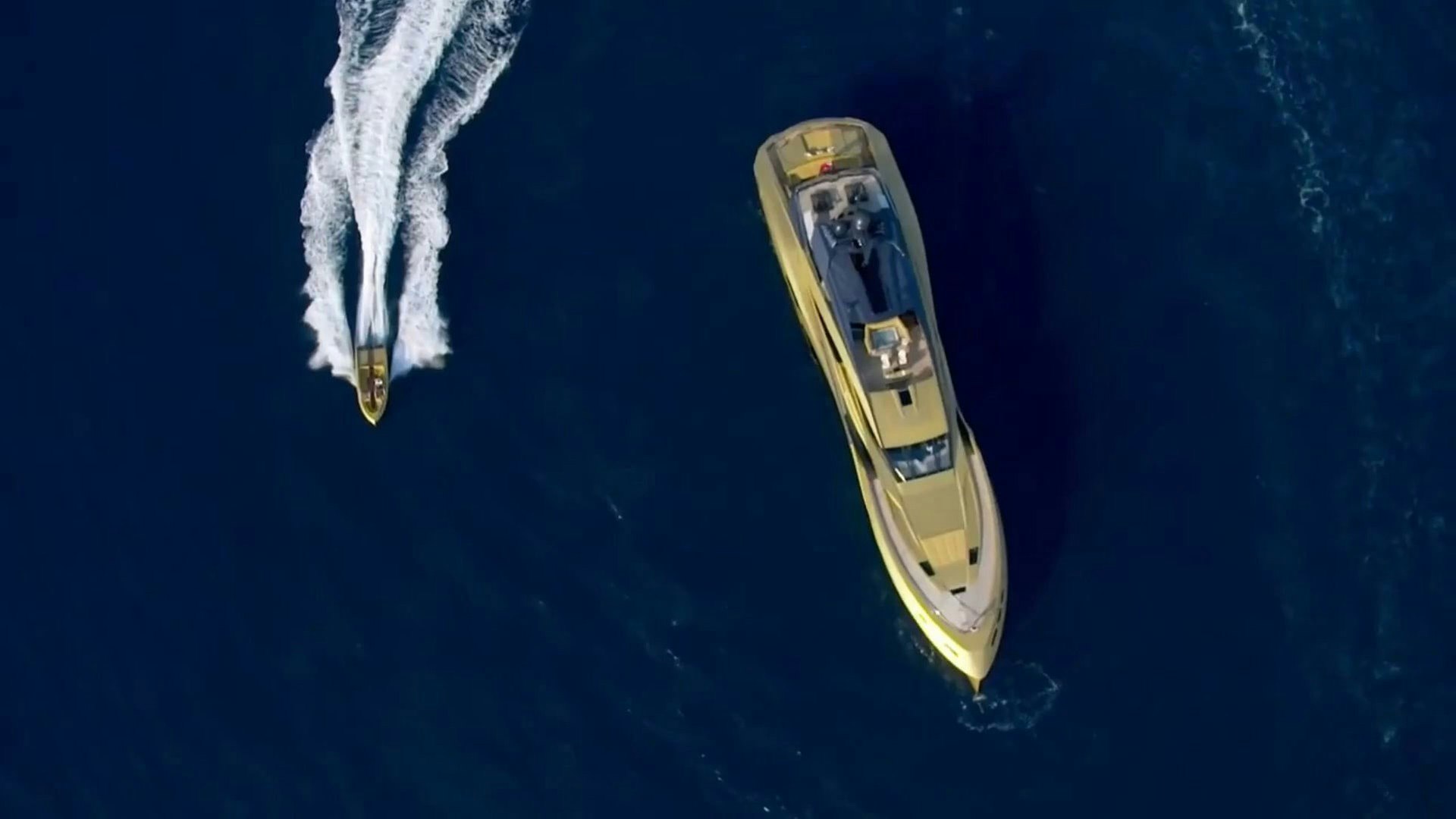
Luxury Yacht Charter
Luxury Charter Yacht: KHALILAH
Search the finest luxury yachts and destinations throughout the world. Whether you are interested in cruising on a private luxury motor yacht, a sailing yacht charter, a crewed superyacht or mega yacht charter. Let us help you explore the world and find your ideal yacht for your dream holiday.
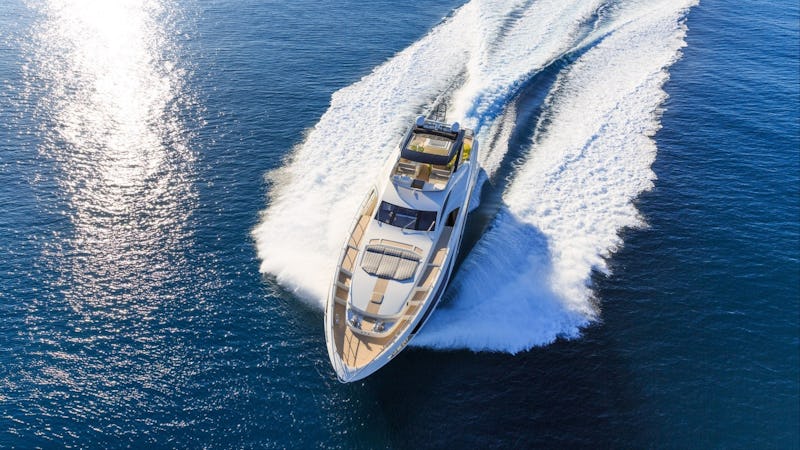
Motor yachts & sailing yachts
Explore the latest motor yachts and sailing yachts, filter through details of all the private luxury charter yachts available around the world, browse through amenities, cabins, itineraries, water toys and price information.
Luxury Charter destinations
Discover luxury yacht charter destinations located around the world. Relax while one of our expert team help you access the perfect cruising destinations and itinerary, from a full on adventure trip to being at one with the sea, we have your charter yacht needs covered.

Your private yacht charter
Our team of charter specialists and charter brokers will help you search yachts that will make your yacht charter experience the best it can be.
Years of industry knowledge to provide you with expert advice to make sure your private crewed superyacht charter leaves you and your charter guests having had the yachting experience of a lifetime.
Popular yachts
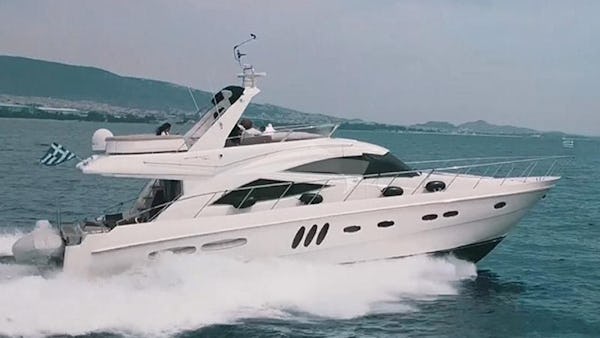
Latest yachts


Matt Weidert
Bareboat Charter Guide for Beginners: First Sailing Vacation
Why go on a bareboat yacht charter trip.
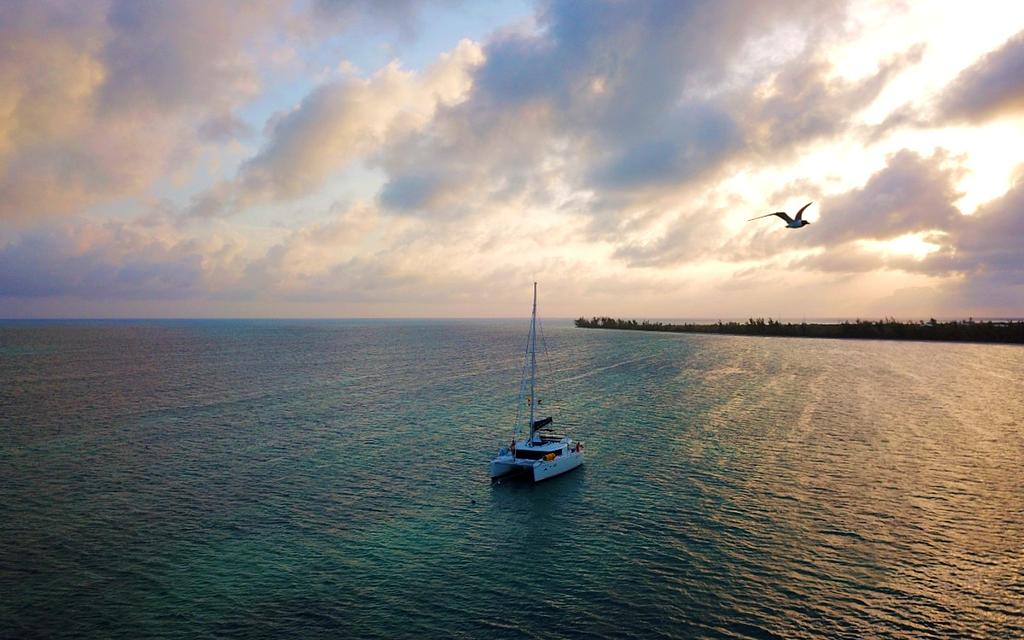
Four ways to go on a yacht charter trip
Bareboat charter, crewed charter.
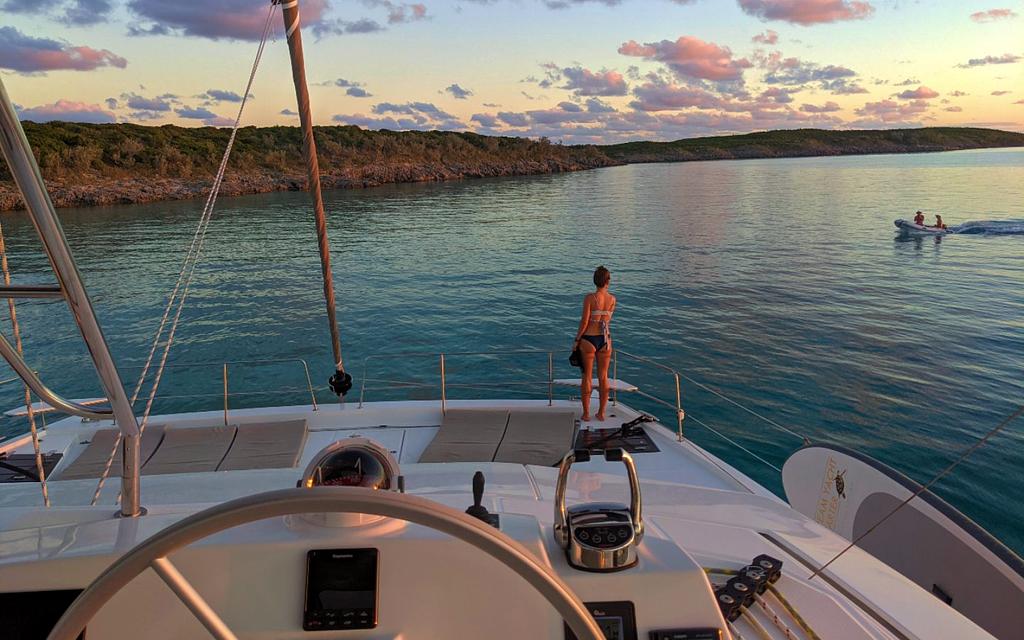
Captained charter
By the cabin charter, what is a bareboat charter.
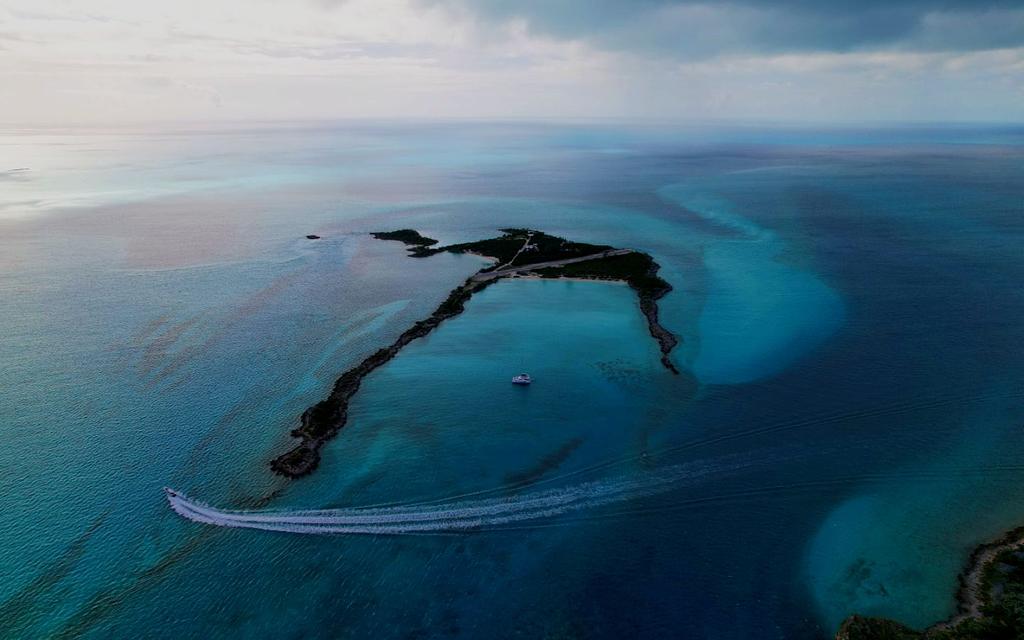
Skills that you need for a bareboat charter
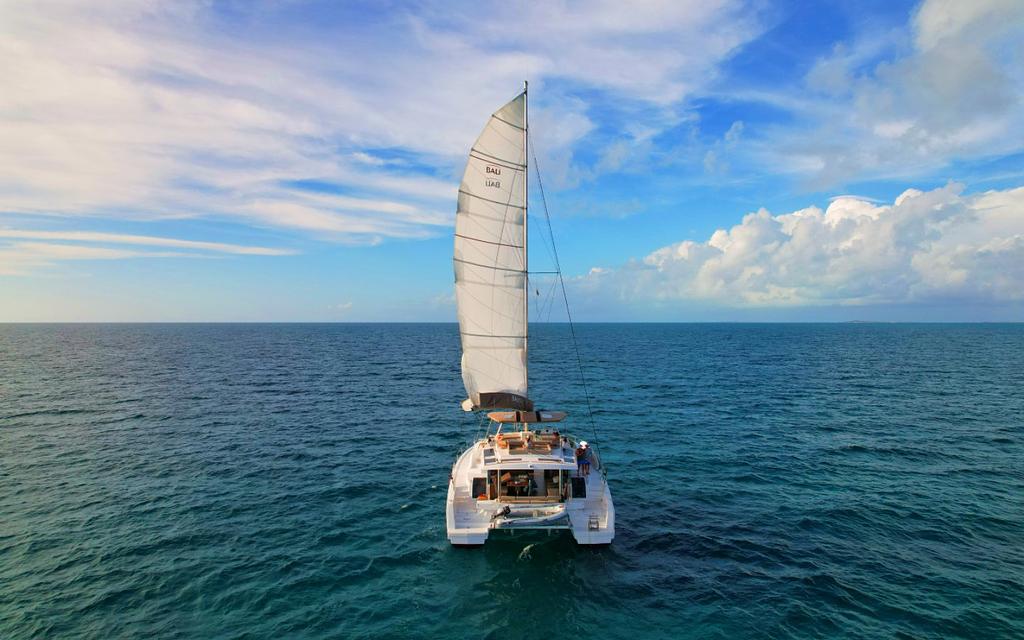
Anchoring and mooring
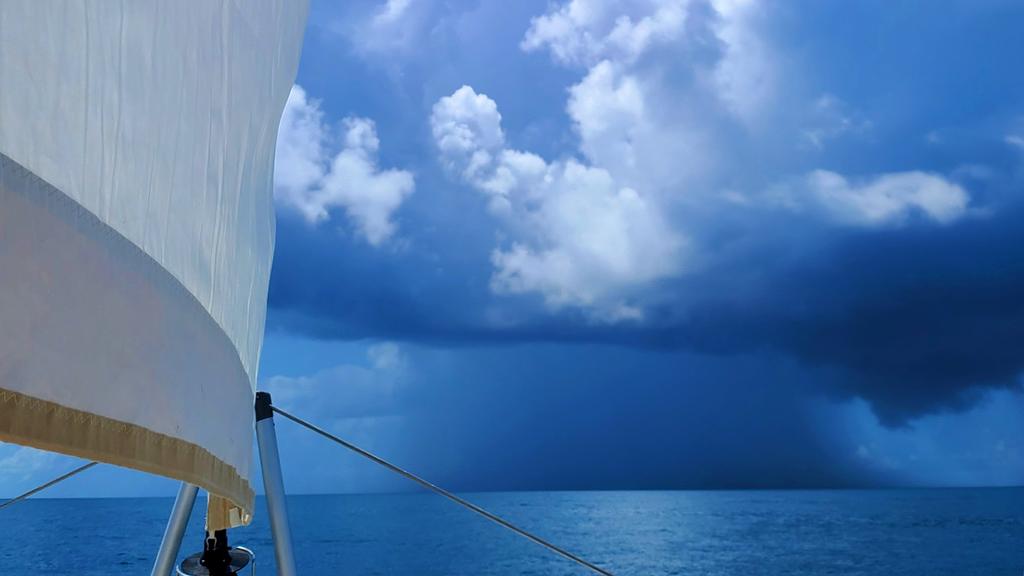
Weather
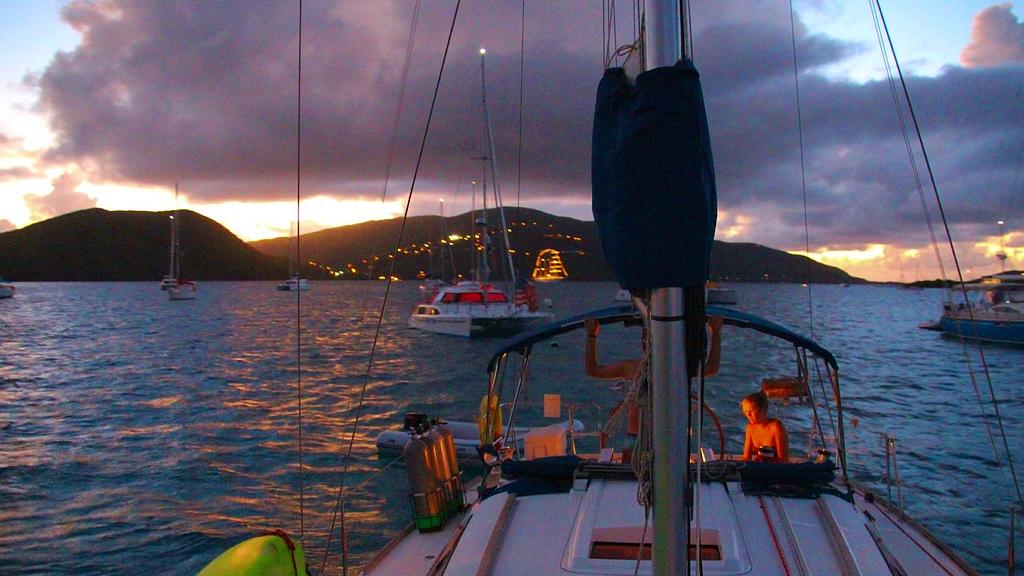
What to consider when choosing a yacht charter boat
Catamaran vs. monohull.
.jpg)
Charter Company
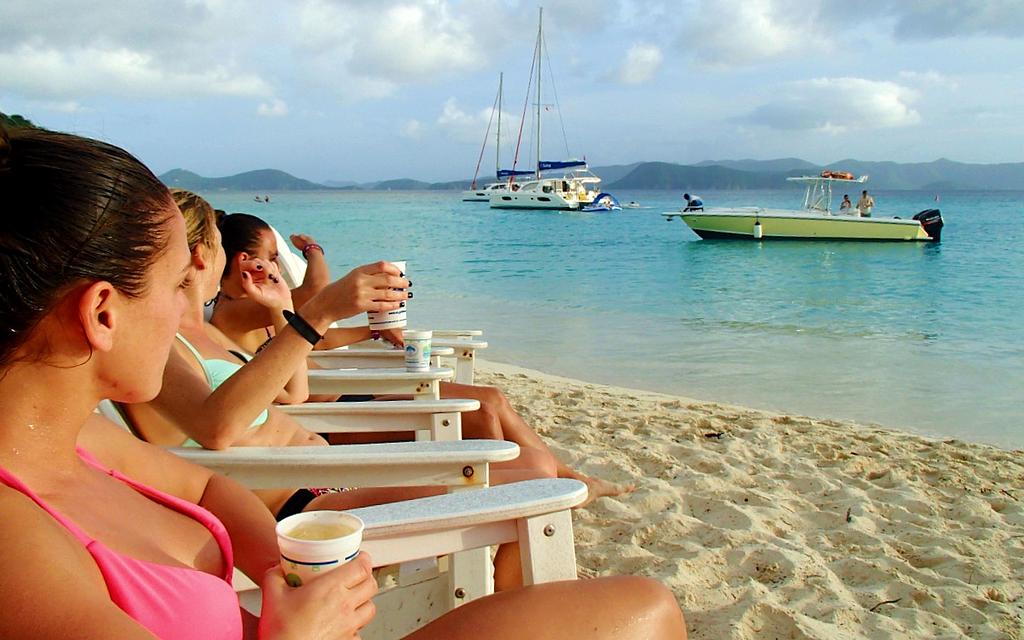
Picking your crew
How long should i plan the yacht charter trip for , provisioning.
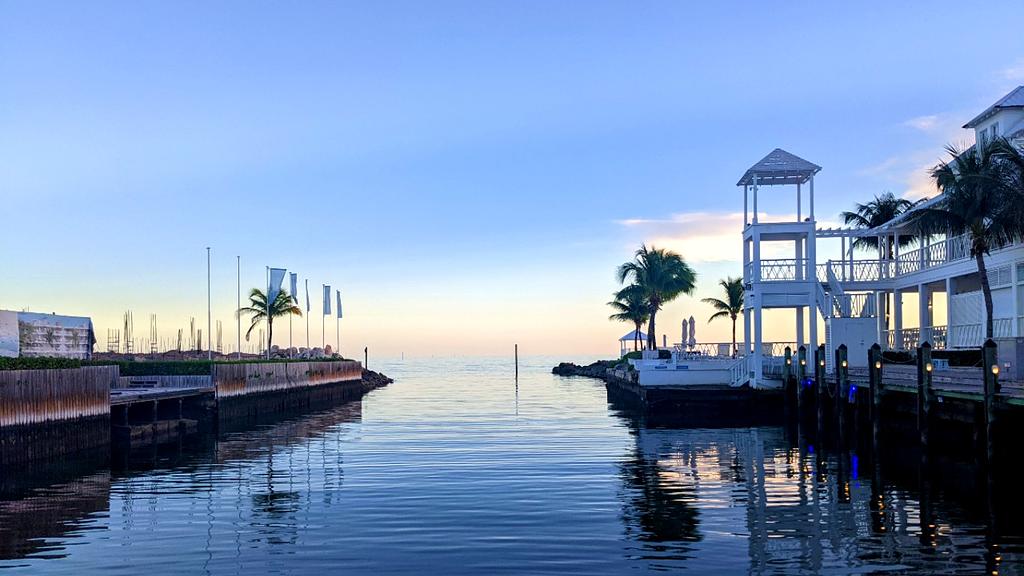
What is the check-in and check-out process like?
- Cruising grounds - they can give you advice on where to go and what areas may be off limits.
- Boat systems and operation - you'll do an inventory and cover all you need to know about the sailboat's systems and sailing equipment. Have a list of questions prepared in case they miss something.
- Safety - such as where the life jackets, life raft, plugs, and emergency tiller are located. You should also cover radio procedures if you need a refresher.
- Communications - how to get in touch with the charter company if you have a repair issue or what to do when you are ready to return to the marina.
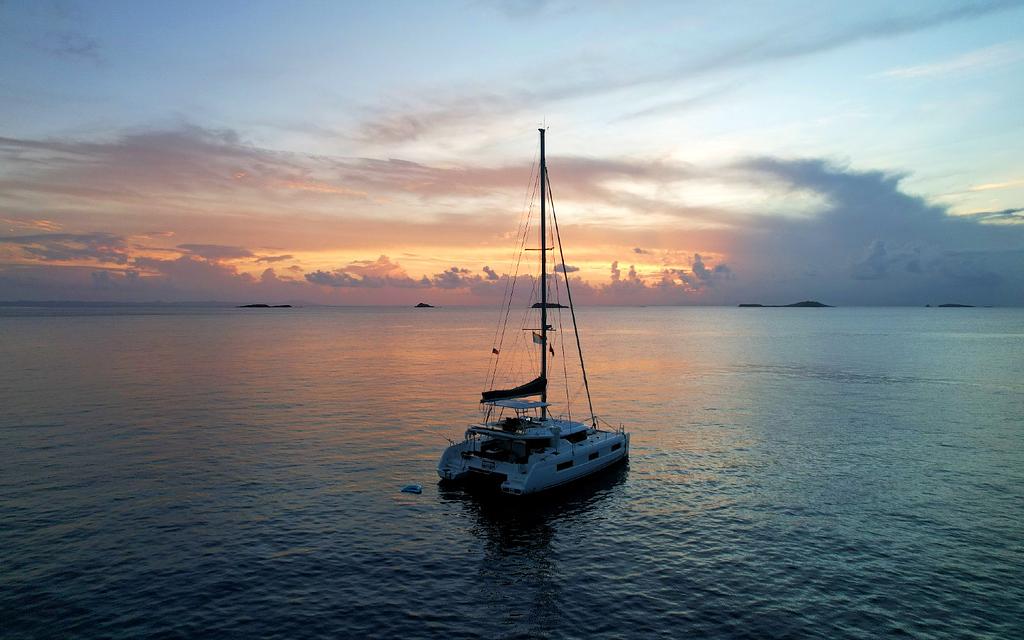
What does a bareboat charter cost?
- Type of yacht : monohulls are going to be more affordable than catamarans (all else equal)
- Size of yacht : not surprisingly, the longer and bigger the boat, the more expensive it will be
- Number of cabins : a 3-cabin catamaran with an owner’s cabin is going to be more affordable than a 4-cabin equivalent
- Age : you’ll pay a premium for newer boats (but also might experience fewer maintenance issues)
- Season : when you charter matters a lot. The high season holiday periods are always the most expensive, whereas, you can find great deals (and solitude) in the low season when tropical disturbances might threaten in the Caribbean
- Discounts : charter companies offer various promotions, but you can usually expect to receive an early booking or a repeat charter discount (5 or 10% each). Last-minute discounts are another great way to save money if you are flexible (or work from home!)
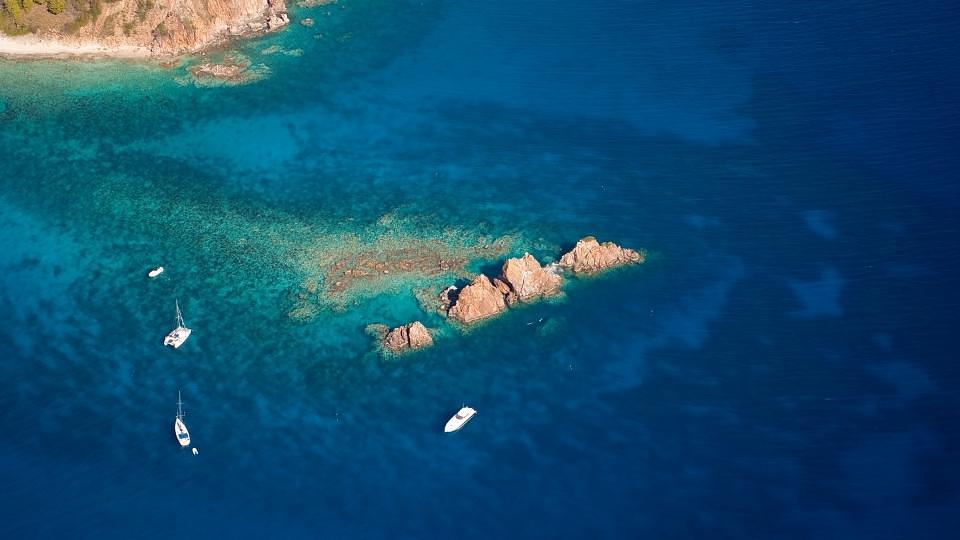
Charter destination for your first trip: British Virgin Islands
- Idyllic Caribbean surroundings - numerous tropical islands that rise sharply out of the ocean. Plenty of protected anchorages. Coconut palm lined white sandy beaches. Great snorkeling and fishing. What else do you need?
- Settled weather - you can expect steady trade winds out of the east year round. If you avoid the summer months when tropical systems can develop, there is little risk of a major weather disruption.
- Easy navigation - there are few navigational hazards and you can usually see the islands you are navigating towards.
- Mooring balls - there are plenty of well maintained balls available, making it easier for beginners.
- Well established bareboat yacht charter industry - lots of operators, a deep bareboat charter fleet, plenty of restauraunts that serve boaters, and many services to help make your trip easy.
.jpg)
First time BVI bareboat charter sailing itinerary
Explore these related articles from the yacht warriors.
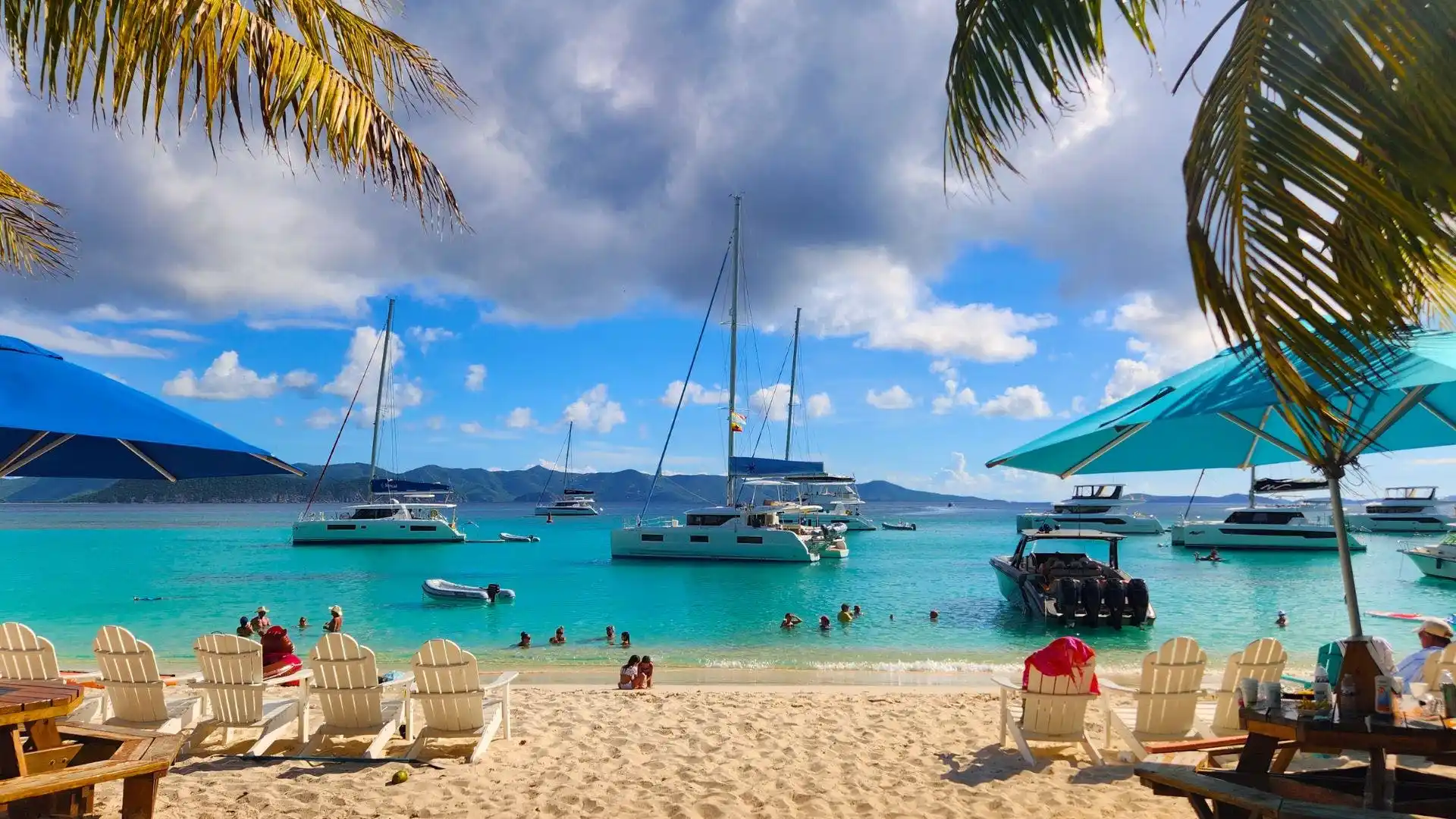
Top BVI Webcams to Check in on the Action
Check out these 8 BVI webcams from some of the most popular BVI bars, restaurants, and hotels such as the Soggy Dollar Bar and Quito's.
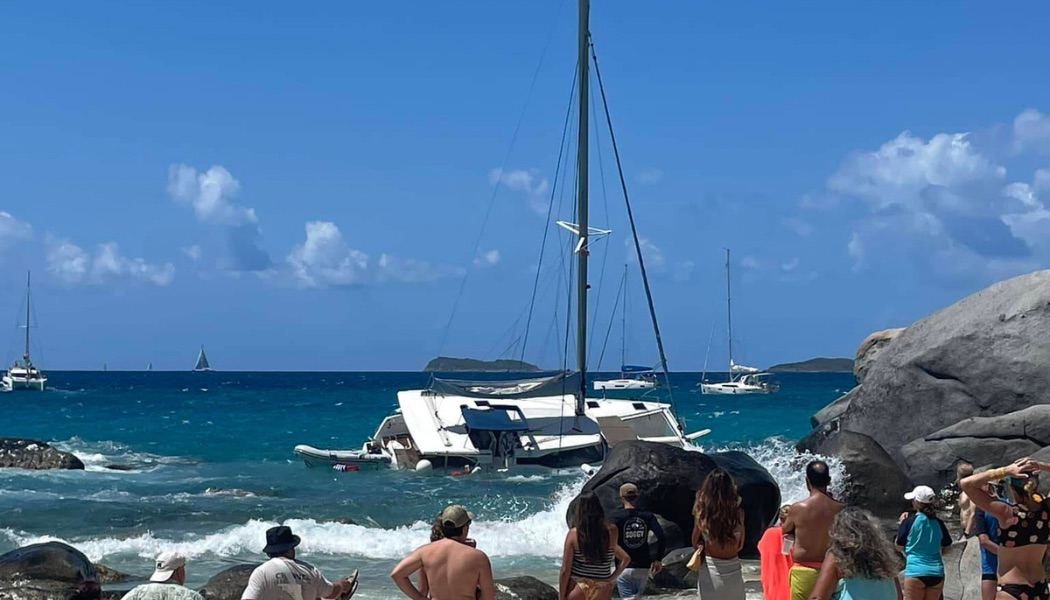
Charter Catamaran Grounding at the Baths BVI Amidst Red Flag
A charter catamaran grounded on the rocks at the Baths BVI amidst red flag conditions.
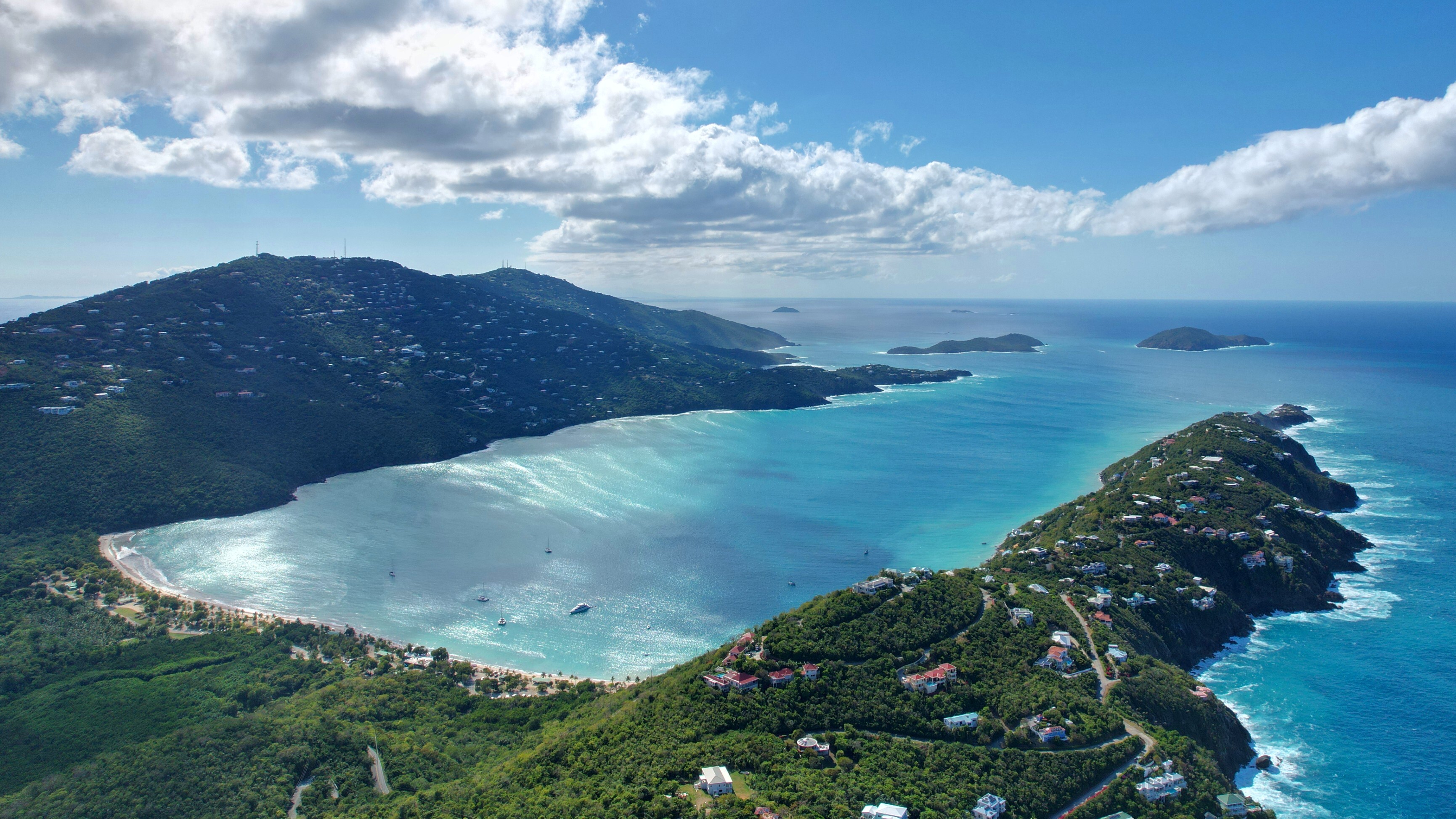
Charter notes from our USVI land-based stay
Discover USVI charter lessons learned from our land-based stay on our Spring Break trip to St. Thomas.
When is your next yacht charter? Consider booking with the Yacht Warriors.
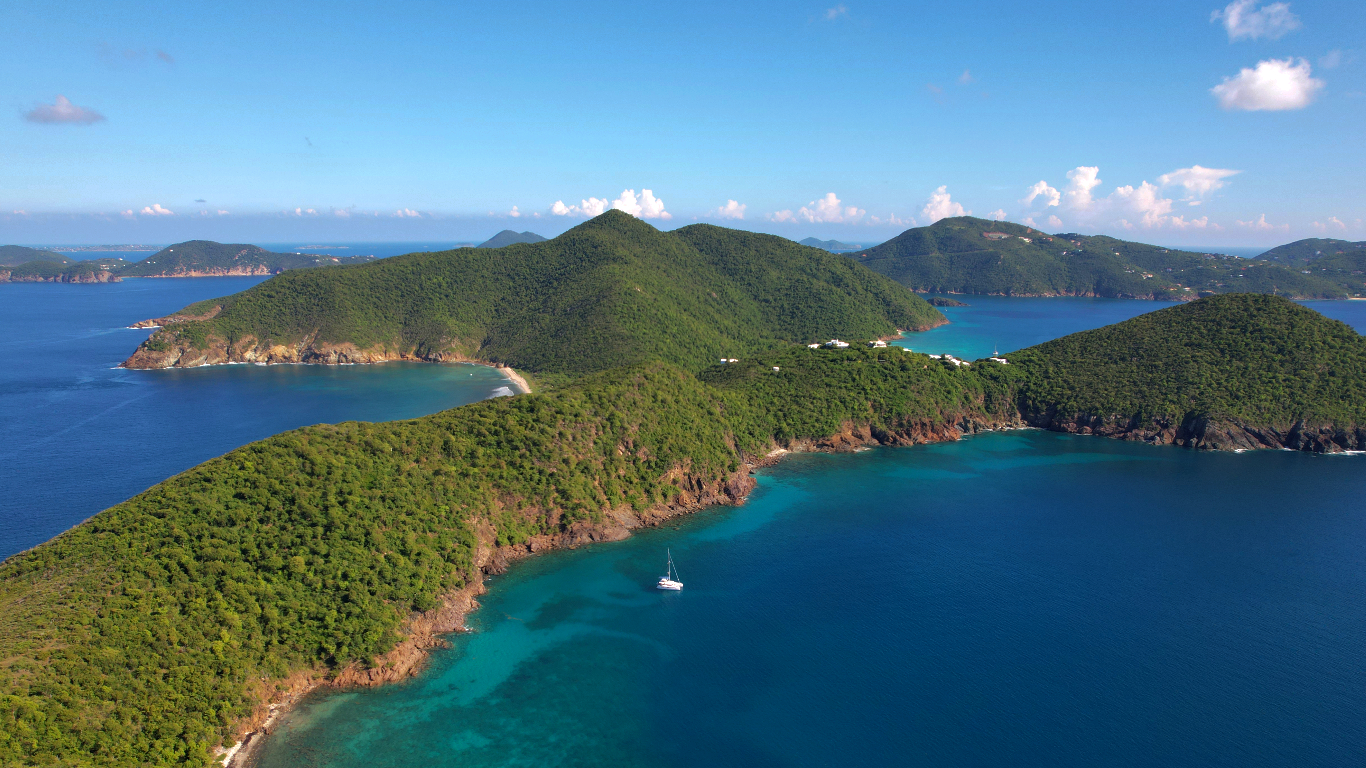
Charter. Beyond.
Get fresh ideas for your next yacht charter trip - insider guides, sailing itineraries, planning tips, and more. Subscribe and receive my free BVI Trip Planning Document.
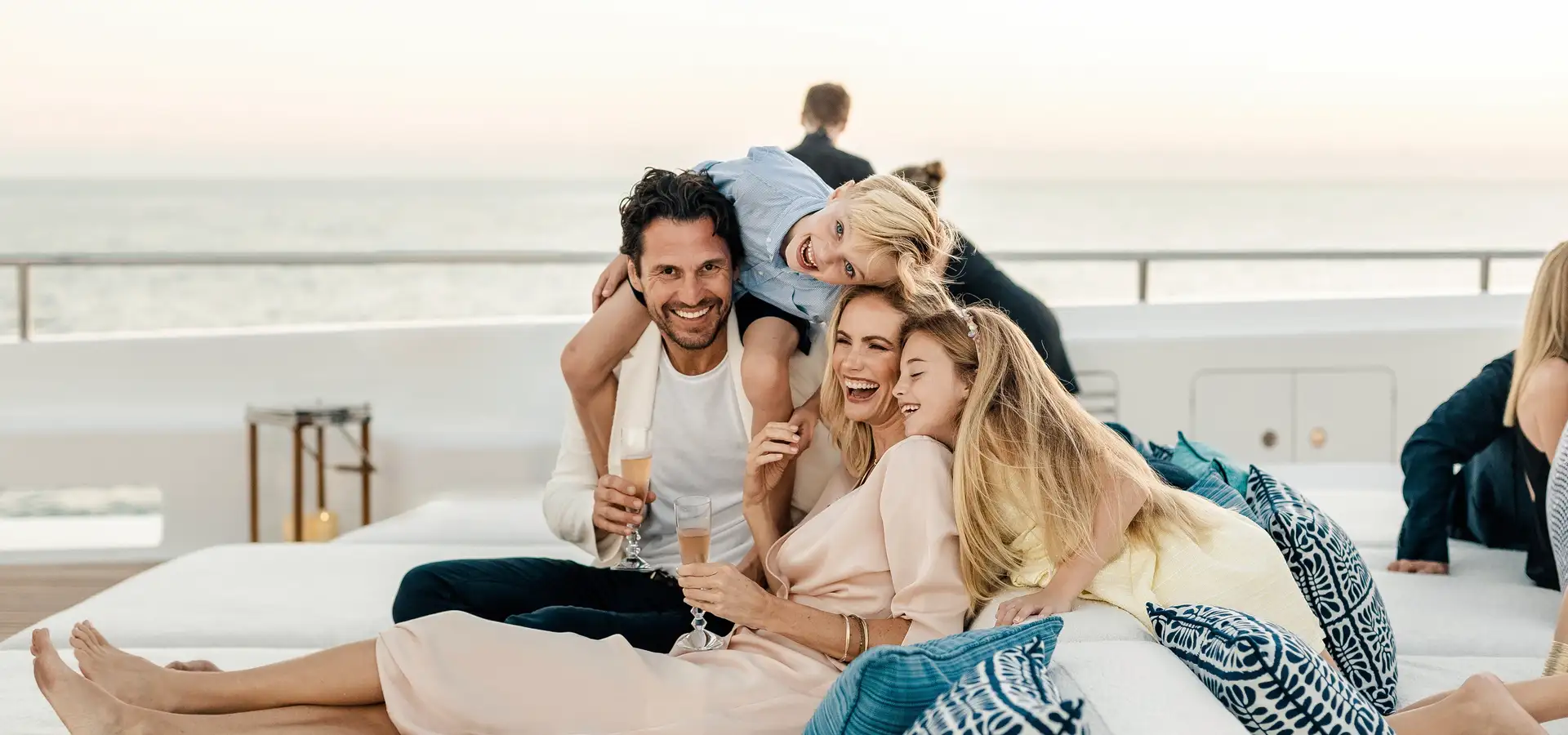
Ready for an extraordinary yacht charter experience?
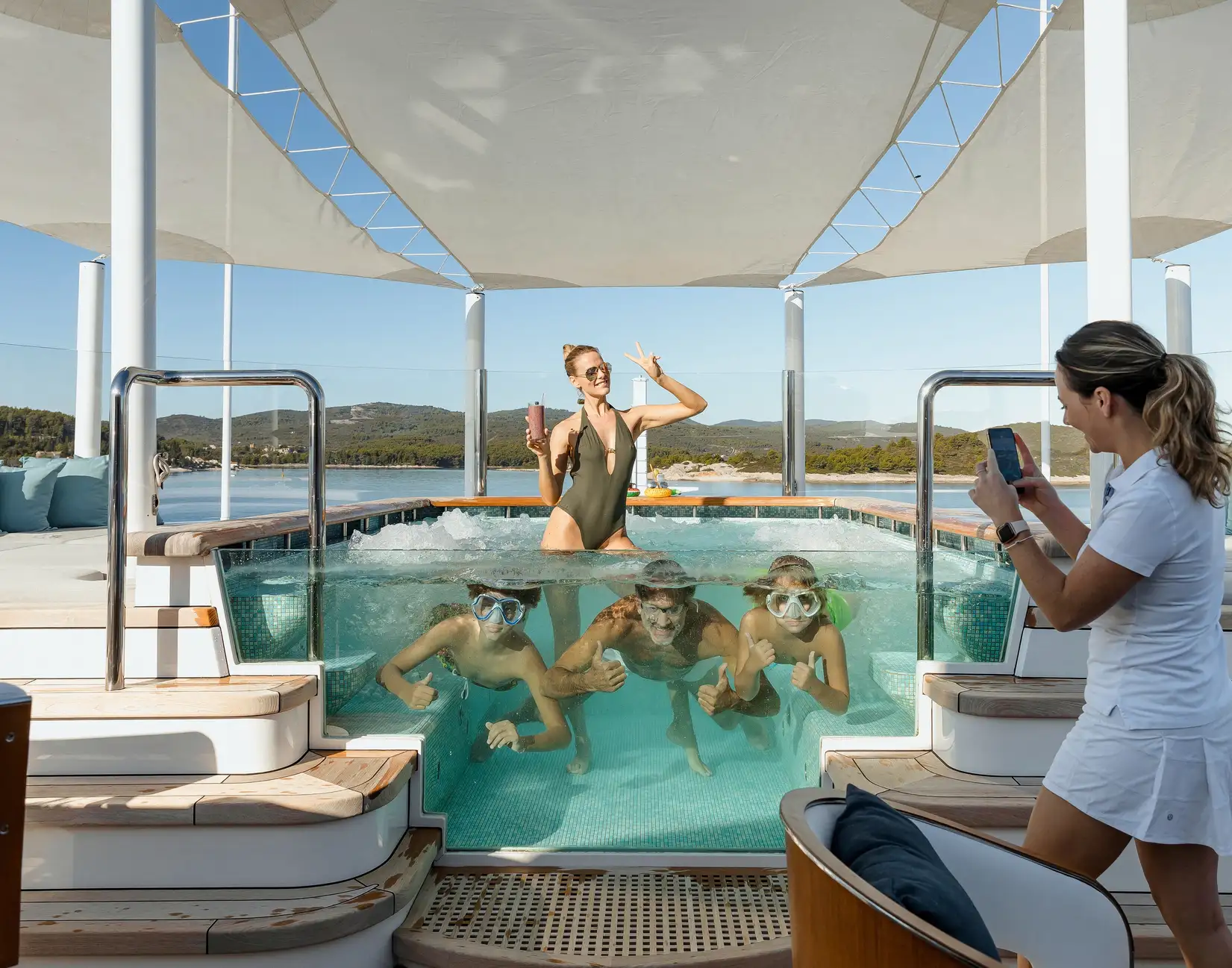
Charter a yacht
- Yachts for charter
Do more of what you love. Indulge in an experience like no other, tailored to you, and only you
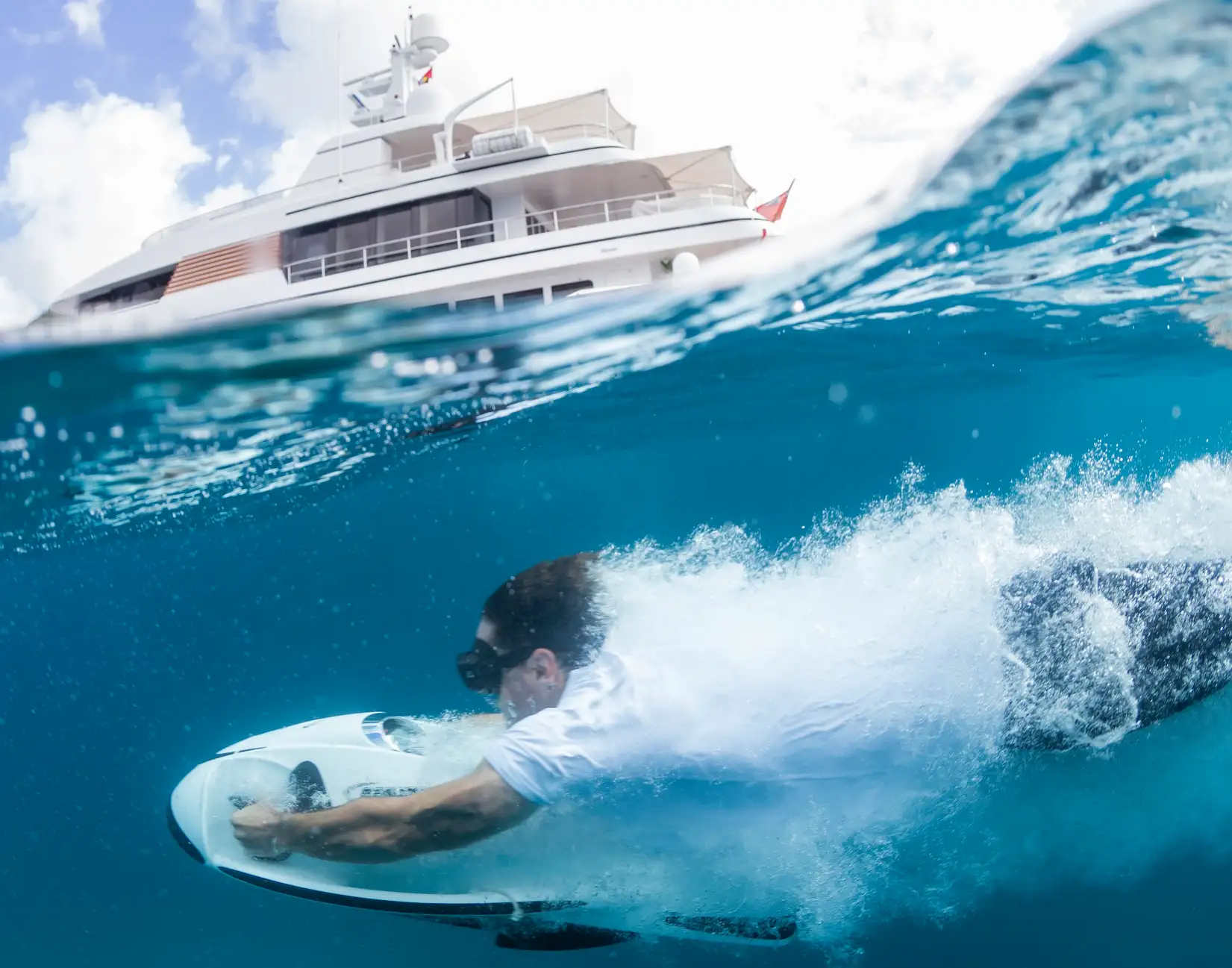
Feel tempted
Charter yacht offers
Want to experience something new? Explore our incredible offers on all sorts of yachts to rent or hire all over the world
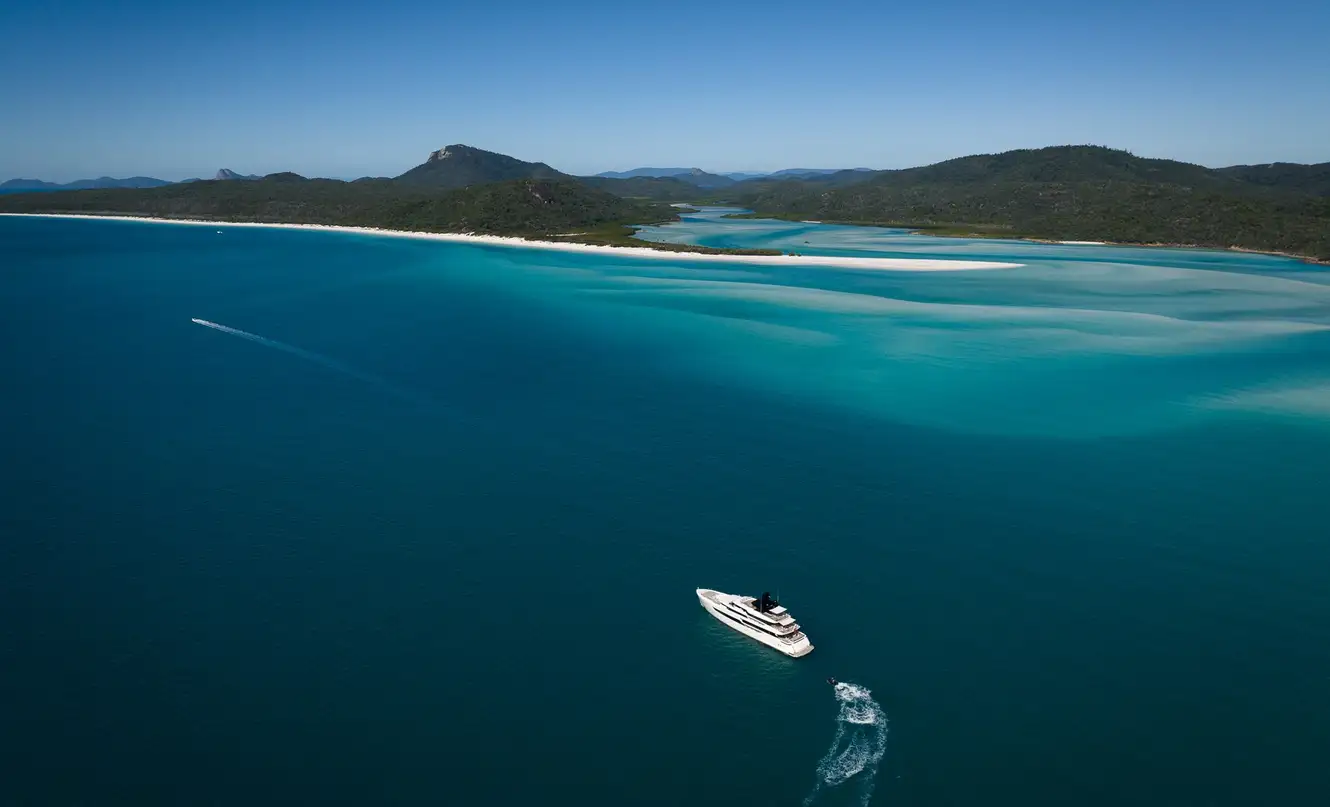
Start your adventure
Yacht charter destinations
Charter a yacht and discover a world where anything is possible, and everything is within reach
Register for an account today
Curate your own yachting space and find more of what’s important to you
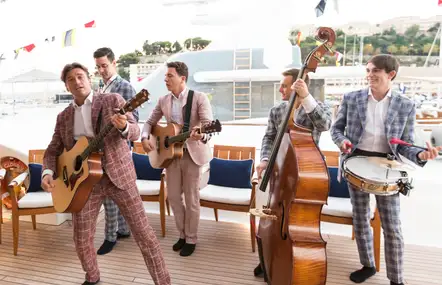
Corporate yacht charter
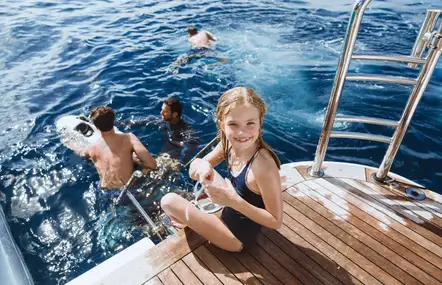
New to yacht charter?
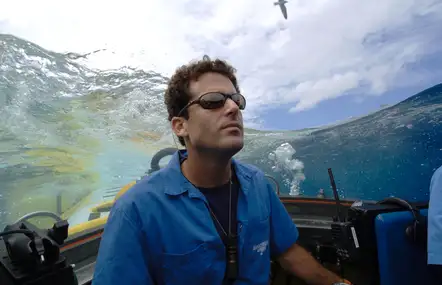
Yacht charter inspiration
You can rely on our expertise.

The Advance Provisioning Allowance (APA) is due at the time of the final charter payment. Under MYBA terms, this sum is usually equivalent to 30 per cent of the total charter fee, but may be up to 40 per cent in some cases.
Intended to cover the operating expenses of a charter as explained under Charter Terms, such as fuel, food, drinks, port fees and ad hoc incidentals, the APA will be given to the captain before the start of your charter. The Captain will ensure that the yacht is fully fuelled and provisioned when you step on board. While an up-to-date summary of accounts can be requested at any time during your charter, a full set of accounts will normally be submitted by your captain at the end of the cruise. If, during the charter, the expenditure exceeds the sum already paid, additional cash funds will be required at once.
All outstanding bills from the yacht charter should be settled in cash or by bank transfer before your final disembarkation. Of course, any remaining credit at the end of your charter will be reimbursed to you in full. On request, transfer arrangements to and from the yacht can be made by Burgess or by the yacht’s captain, payment for which will be deducted from your APA.
At the heart of all we do
Popular charter destinations in may.

- French Polynesia
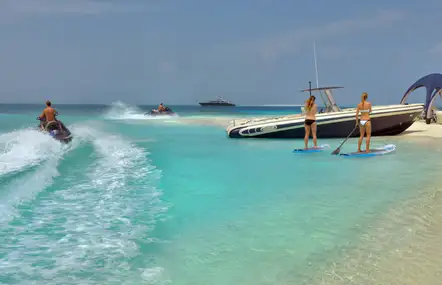
Discover the Burgess difference
Charter a luxury yacht with Burgess. We are trusted for our expertise, and it is the first-hand insights of our charter brokers that raise the bar. Our collective knowledge serves to make your superyacht charter experience exceptional. Explore our stunning collection of luxury yachts for rent or hire and speak to our experts about chartering a private yacht to your dream destination.
Privileged access to the world’s finest charter yachts
Every charter yacht in the Burgess fleet is unique, from interior design and on board facilities, to watertoys and impeccable service. We rigorously inspect every yacht to ensure that when you find your ideal match, it exceeds every expectation.
A wealth of knowledge to enhance your experience
A superyacht charter offers life-affirming adventure and little can compare to a tailor-made experience orchestrated by your Burgess broker. By accommodating both your preferences and requirements, no detail is left to chance.
Personalised service that goes above and beyond
Burgess charter brokers are involved well beyond the booking stage. We share our intelligence on the best itineraries to suit you, organise private jet transfers, on board celebrations, luxury boat hire, restaurant bookings, spa treatments, fitness instruction and more.
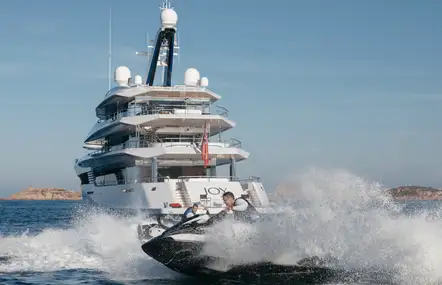
- Motor yachts for charter
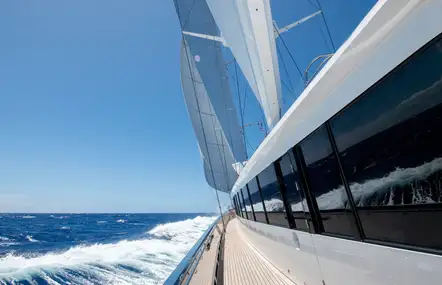
- Sailing yachts for charter

Creating a unique yacht charter experience starts with you. On board, the possibilities are endless – all you have to do is realise them.
A honeymoon yacht charter is the perfect getaway after your wedding. You and your spouse can settle down to spend some quality time together on board, as your yacht heads toward your dream destination. Relax on a Caribbean beach with a cocktail in hand, or discover the wonders of Thailand together. The choice is yours.
Tempted by a summer yacht charter? Set sail for the Mediterranean , where you can unwind in one of Ibiza ’s famous wellness retreats, or explore the iconic pink streets of Saint-Tropez . Greece also makes the perfect destination for an explorer yacht charter holiday, thanks to its abundance of islands. Perfectly blending beautiful coastlines, sunsets and sites of antiquity, you’ll be well on your way to an indescribable Greek adventure.
If it’s cooler climes you’re after, don’t panic. Alaska and Antarctica are both popular destinations for expedition yacht charters that are filled with thrills. Try heli-skiing and hiking, kayaking through icebergs or experiencing them from below in a submersible, before warming up on board your luxury winter yacht charter.

5 stunning private Mediterranean islands to add to your charter
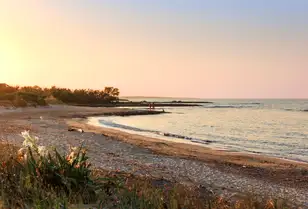
Discover clean-tech yachting expeditions
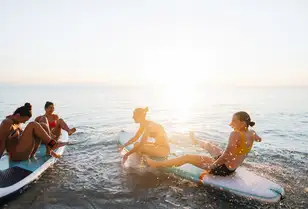
Book for spring break 2025
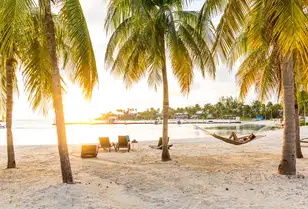
A guide to visiting the Cayman Islands on board a superyacht

Antarctica explorer yacht charters
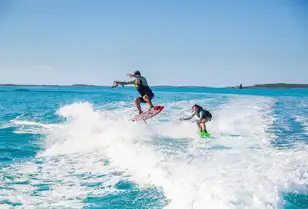
Up your game!

Burgess Global Clean Up 2024
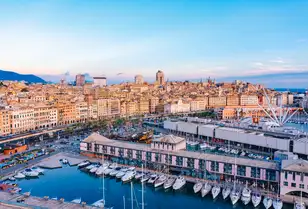
The Burgess guide to the MYBA Charter Show
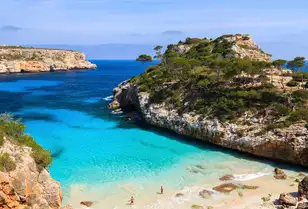
Planning your 2024 summer yacht charter
Sign up to our newsletter, stay in the loop.
Subscribe to our newsletter to keep updated with all things Burgess.
What would you like emails about?
- Chartering a yacht
- Buying or selling a yacht
- General superyacht news
In order to understand how we use and protect your personal information, please read our privacy policy .
- Mediterranean
- French Riviera
- Corsica & Sardinia
- The Balearics
- Croatia & Montenegro
- The Bahamas
- Caribbean - Leeward Islands
- Caribbean - Windward Islands
- British Virgin Islands
- US Virgin Islands
- New England
- Indian Ocean
- South East Asia
- The Red Sea
- Latest offers
- Destinations
- New to charter
- Meet the Charter team
- Superyacht videos
- 360° yacht tours
- Corporate & event charters
- Inspiring charter ideas
- Charter FAQs
- Every day different
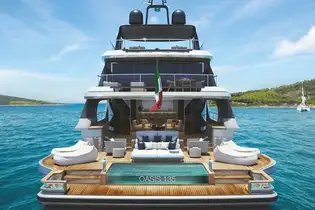
Charter TOSUN in the West Mediterranean
Three weeks of summer availability remaining
Extensive beach club with infinity pool, and fold-down side terraces plus spacious sun deck with dining and bar
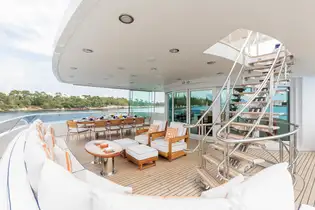
Charter LA TANIA in the West Mediterranean
High and low season availability
Young and dynamic crew with years of expertise. Light, ‘beach club’ style interior and incredibly spacious decks
- Motor yachts for sale
- Sailing yachts for sale
- Yachts for sale over 200 feet
- Yachts for sale from 150 to 200 feet
- Yachts for sale under 150 feet
- Tenders and chase boats for sale
- Yachts under construction
- Meet the Brokerage team
- Berths for sale
- Sold yachts
- Yacht marketing
- New Build Sales
- Refit a yacht
- Delivered yachts
- Yacht designers
- Meet the Technical Services team
- Meet the Yacht Management team
- Crew vacancies
- Meet the Crew Services team
- Procurement Services
- Charter Management
- Sales Management
- Yacht Marketing
- Meet the Insurance team
- 360 degree yacht tours
- Boat shows and events
- Office vacancies
- Talent pool
- Office locations
- Burgess in Asia
- Burgess Blue Oceans
- Strategic partners
- Press centre
- Company Operations
- Crew Services
- New Business
- Technical Services
- Yacht Management
- Burgess Impact Report 2023
Filter your results
- Yachts for sale

6 Tips For Choosing The Best Yacht Charter Experience
C hartering a yacht is the ultimate in custom vacationing, a travel trend that gained traction during COVID and shows no signs of stopping. It offers travelers an opportunity to reach their dream destinations in comfort, style, and exclusivity. The best part: Very often, this bespoke experience can be cheaper than a cruise on a higher-end line you’d have to share with a lot of strangers!
Here are six tips for choosing the best yacht charter experience to suit your style, tastes, and holiday goals!
1. Work Within Your Budget
For most travelers, money is indeed an object, or at least a big consideration. A great charter company has a fleet of vessels at its fingertips, from smaller options such as a catamaran or sailing yacht all the way up to a super yacht with ultra amenities. Their team will work with you to assess your travel budget and offer appropriate options. Keep in mind: There’s all sorts of costs — such as fuel, docking fees, and other extras — that factor into a vacation like this. Some companies roll most of those items into a blanket price, others will calculate them separately or in an overage fee called an “advance provisioning allowance.”
Quick Example: Last year, I sailed on the super yacht Ohana in Croatia. It was part of the Goolets charter group based in Slovenia, which charges a flat weekly accommodation cost; an advance provisioning fee is assessed for food, beverages, and any other extras. The lovely ship slept up to 30 guests quite comfortably and all-in at high season (with APF included) was about $143,000 a week. Steep? Sure, at first glance. But broken down per person, the cost comes out to about $4,300 for each friend or family member. That’s food, drinks, excursions, everything. So, it turns out this kind of travel can indeed be budget-friendly and a good charter will work with you to maximize your money.
2. Location, Location, Location
When considering a private yacht vacation, location is everything. The good news is that charter companies operate all over the world, from the aforementioned Croatia to Australia, the Caribbean, Indonesia, and everywhere there’s sea in between.
If you’ve got a dream destination on your bucket list, a private yacht vacation will help get you there. Choose a charter company that has deep bench strength in the region you want to visit. They’ll have a wide range of yachts and corresponding itineraries for you to consider, ensuring the perfect experience for you and your party. Whether you crave the party scene of Greece, Italy, or the Riviera, or prefer something more far-flung and secluded such as the Seychelles or Maldives, a yacht charter experience will have you covered.
3. Consider Your Entire Party’s Needs
Another big perk of a great charter company: They will handle all the onboard logistics during your cruise, considering your entire party’s interests, must-dos, mobility levels, and even special occasions in an easy, effortless manner. They will interview you ahead of time to assess your interests, then craft an itinerary that suits everyone from start to finish. Keep in mind, they know the local area, plus have access to the best guides and onshore experiences. They will pull out all the stops to make sure everyone in your group has a terrific time.
Culture vultures to party animals will have the perfect vacation planned for them by the yacht charter. From city walking tours led by historians to exclusive access to the best clubs and other hotspots, the charter company and your yacht’s onboard staff are there to make sure it’s all picture-perfect. And if you feel like scrapping your schedule for the day and choosing to stay on the water? That’s just fine, too. The crew will roll with your wishes and honor them.
4. Food And Beverages = Big Deals On Board
No question about it, fabulous food and hand-crafted beverages are central to a terrific private yacht experience. Again, this is where that thorough pre-interview really comes into play. A charter company will consider not just preferences, but any allergies, dietary considerations, or religious restrictions to make sure the chef is prepped accordingly. Expect special snacks and other surprise touches to shine through as well; during my charter, a special birthday cake was procured and presented to a young guest after dinner on his big day.
While the yacht’s team will make sure your food tastes just as spectacular as it looks, they’ll also likely lean into the regional culinary scene with locally sourced fruits, vegetables, meats, and of course, seafood! Keep in mind your yacht’s stewards are responsible for keeping bar service running smoothly; by the second day, they knew which mid-afternoon cocktail I fancied (Croatian sparkling wine) and which wines I preferred at dinner. My glass was never empty, until I signaled I was done for the evening.
Bottom Line: Your culinary service should be seamless and impeccable during your time on board.
5. Don’t Forget The Water Toys
Water toys are a big part of a private yacht experience — you’re on the water after all and want to make sure you can get out there and enjoy it. Look for a vessel that has a robust fleet of options that align with your party’s fitness level and recreation (or adrenaline!) goals. Kayaks, rafts, and jet skis are all fairly standard; some yachts also include seabobs, massive water slides, and even inflatable water playgrounds to ensure multi-gen fun on the water.
Pro Tip: Depending on the destination, divers will also want to inquire about scuba or snorkel equipment.
6. Find A “Your Wish Is Their Command” Crew
One of the best parts of a private yacht vacation is the bespoke service you’ll experience every step of the way; the goal is to make sure you want for nothing during your time on board. Craving a cucumber water while you’re lounging on deck? They’ll have it. Want to make sure there are snacks waiting for you after you return from kayaking? Of course! And want to take your dinner to another level? Crews take great pride in creating over-the-top table masterpieces and theme nights that will dazzle everyone in your party.
Of course, crews can and do accommodate more outrageous requests, but don’t be that Below Deck nightmare and ask them for something that’s illegal. It puts them in a terrible position where they could be held liable, and it’s just not cool.
Keep In Mind: A crew that provides excellent service deserves excellent recognition. Be kind and make sure you factor an appropriate tip into your budget. It’s very often not included in the price of the charter or advance provisioning fee.
For more cruise content like this, check out these articles:
- 9 Best Alaska Cruise Lines
- 8 Best Cruise Lines According To Our Readers
- 6 Cruise Splurges Our Experts Say Are Worth Every Penny
This article originally appeared on TravelAwaits
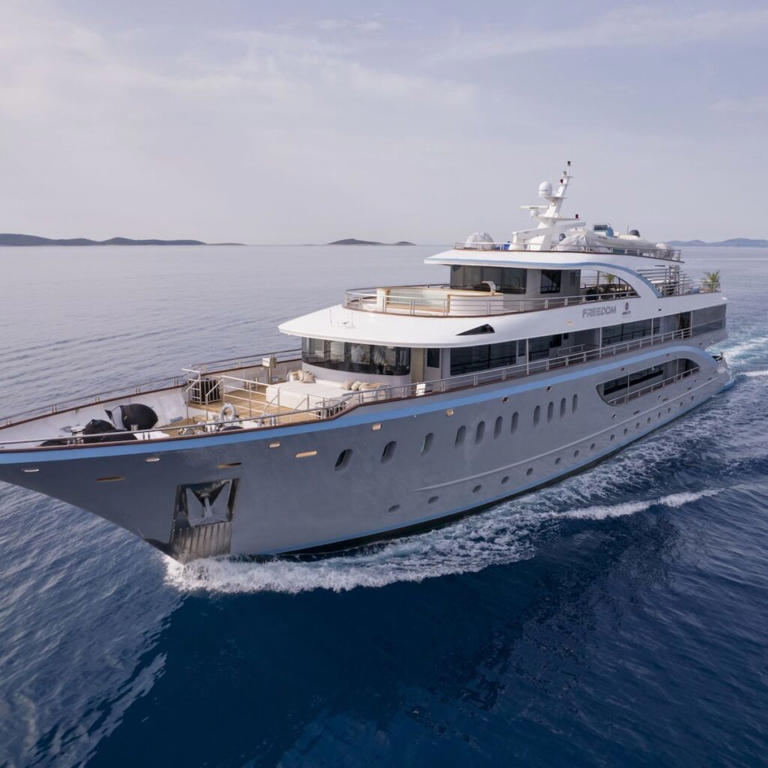

- Explore Our Yachts
- Newest Yachts for Yacht Charter
- Largest Yachts for Yacht Charter
- Destinations
- Special Events

Best Price Guarantee
We will meet or beat all competitors' rates.

Learn More >>
Use the form below to search our site. If you have any questions at all, please contact us today.
Recent Posts
- How to Chill After Covid Lockdown [quick strategy]
- 58 Meter St Martin Yacht Charter Vessel Is A Standout
- Award-Nominated Luxury Yacht Charter Vessel Offers Deep Winter Discounts
- Updated – Champagne Names – How to pronounce them?
- Did She Really Offer That???
- Book Now / Contact Us
- Privacy Policy for Our Family of Companies
I organize yacht charters for the 1% and love my job. I take care of everything for them, from ordering KFC to $12,000 Pinarello bikes.
- Alex Coles, 43, is a bespoke yacht charter broker based in London.
- He organizes private yacht trips for UHNW clients that can cost over $100,000 for seven days.
- This is what his job is like, as told to writer Chrissie McClatchie.

This as-told-to essay is based on a conversation with Alex Coles, a yacht broker from London, about his job. It has been edited for length and clarity.
Preparation is the key to organizing yachting vacations for the 1%. When charter arrangements are well-planned, a lot of potential problems can be avoided. In my experience when things do go wrong, it's usually a technical issue with the yacht, which unfortunately is out of everyone's control.
But when something does go wrong, I've learned to keep my clients happy by offering solutions. I'll never forget the time I organized a 40-person charter along the Tuscany coast. Three days into the trip, the yacht's air conditioning broke down and was going to take three days to get fixed. So I chartered helicopters to fly the party from Forte dei Marmi to Monaco, where I booked 20 suites at the Hôtel de Paris Monte-Carlo for them to stay in until the repairs were done, as well as day charter boats so they could still be out on the water. When the AC system was working again, the yacht came to Monaco to pick them up.
I've been in the industry for over 20 years now and founded Bespoke Yacht Charter with my wife Rachel in 2014. Ever since then we've split our time between London, Nice, and the hinterland of the Côte d'Azur. Rachel works on the event side of the business with companies looking to book yachts during events like the Cannes Film Festival, as well as corporate functions and weddings. Yachting vacations are my expertise.
The job of a yacht charter broker is to find the perfect yacht for the needs and demands of each client
If, for example, the client is passionate about Japanese cuisine, I will hunt for yachts with chefs who specialize in that cuisine. After confirming the charter with the yacht's representative, called a central agent, I then make sure the yacht is completely prepared for my client's arrival and that, once onboard, everything runs smoothly during their vacation.
The most popular charter our clients book is seven days on a 115-foot motor yacht
On average, this type of vacation would cost around $110,000. The charter price always includes crew but food, wine, and fuel are extra. Clients pay an APA, or Advanced Provisioning Allowance, in advance to cover these additional expenses. The crew's tip isn't included either, and is given at the discretion of the client.
Smaller yachts are of course more affordable — for example, $23,000 will get you seven days on a 60-foot catamaran in Croatia, with everything included in that price.
Related stories
Our focus is on chartering motor yachts between 100- and 200-feet. It's less common for clients to ask for sailing yachts. The largest yacht I regularly charter is a 230-foot vessel that can sleep 30 guests in 15 cabins. It has a 2,700-square-foot sun deck, gymnasium, beauty salon, spa and sauna, and a 12-person spa pool.
A large chunk of my clients have booked at least six charters with me and some much more than that, so I get to know their individual preferences and what does and doesn't work for them. I always pass that information on to the crew when I meet them on board before each charter.
We are as hands-on as the guests want us to be when their charter begins
Some clients want us to be there at cast-off, so I'll meet them with a driver at the airport, accompany them to the yacht, introduce them to the crew, and show them around the boat.
Other clients are extremely busy people and their holidays are seriously valuable to them, so they just want to be cruising out of the port with a drink in their hand as quickly as possible.
Throughout the charter, I'm on the phone 24/7 with the crew, handling all the nightclub and restaurant reservations and any other requests that may come up
The most common request is for gym and exercise equipment. I've delivered so many Pinarello bikes to yachts that I now have an account with the company. I've even arranged for professional cyclists to ride with clients who want to train with the best in the business.
Clients are often intrigued by the array of water toys that they can use while onboard. The most popular right now are e-foils (electric hydrofoil surfboards), paddle boards, and water bikes. Jet-skis are always in fashion, too.
The summer months from June to September are the most hectic of the year. July is my busiest month — sometimes I have up to 14 charters scheduled at once.
I've had clients spend tens of thousands of dollars on wine and champagne for a week-long charter
Guests are less inclined to eat in restaurants nowadays and prefer to eat onboard, which makes sense as many yacht chefs have Michelin backgrounds. Clients typically prefer health-conscious food on the charter, although from time to time people do have fast food cravings which is a bit tricky if the closest McDonald's or KFC is 30 miles away.
More than once I've found myself delivering buckets of fast-food chicken wings to the yacht's chef, who then has to heat everything up. But those unique requests are exactly what I love about the job — making sure that every single moment of those seven or 14 days is just the way my clients want it to be.
I have a lot of American clients, so it's not unusual for me to be on the phone working at 3 a.m.
Often I have clients who have shortlisted three or four yachts for their charter, so I'll group together viewings and walk through the yachts on FaceTime. I go with what the day throws at me — some days I have four hours of work to do, others 14.
Although last year was a good season for us, after two pandemic years we're hoping this summer marks a return to normal, especially for the events side of the charter business. The signs are very promising, so we're crossing our fingers!
- Main content
- New Sailboats
- Sailboats 21-30ft
- Sailboats 31-35ft
- Sailboats 36-40ft
- Sailboats Over 40ft
- Sailboats Under 21feet
- used_sailboats
- Apps and Computer Programs
- Communications
- Fishfinders
- Handheld Electronics
- Plotters MFDS Rradar
- Wind, Speed & Depth Instruments
- Anchoring Mooring
- Running Rigging
- Sails Canvas
- Standing Rigging
- Diesel Engines
- Off Grid Energy
- Cleaning Waxing
- DIY Projects
- Repair, Tools & Materials
- Spare Parts
- Tools & Gadgets
- Cabin Comfort
- Ventilation
- Footwear Apparel
- Foul Weather Gear
- Mailport & PS Advisor
- Inside Practical Sailor Blog
- Activate My Web Access
- Reset Password
- Customer Service

- Free Newsletter

How to Perform Your Own Pre-Buy Inspection
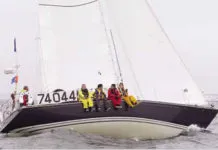
C&C 40 Used Boat Review

Sabre 386 Used Boat Review
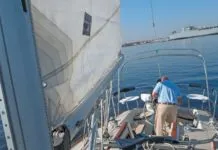
What You Can Learn on a Quick Test Sail

Preparing Yourself for Solo Sailing

Your New Feature-Packed VHF Radio

Preparing A Boat to Sail Solo

Solar Panels: Go Rigid If You have the Space…

Ground Tackle Inspection Tips

Shoe Goo II Excels for Quick Sail Repairs

When Should We Retire Dyneema Stays and Running Rigging?

Rethinking MOB Prevention

An Unusual Sailboat Shines a Light On A Sustainable Future

Is It Time to Get an Electric Dinghy Motor?

Worship Your Universal M-Series Diesel With the Marinized Kubota Block

Taking Care of Your 12-Volt Lead-Acid Battery Bank

Battle of the Teak Cleaners — Snappy Teak-Nu vs. Star Brite

New Seacocks for the Offshore Sailor

Bottom Paint Care

Quick and Safe Sail Cleaning

Are E-bikes Worth the Extra Weight and Cost?

How to Handle the Head

The Day Sailor’s First-Aid Kit

How to Select Crew for a Passage or Delivery

Re-sealing the Seams on Waterproof Fabrics

Waxing and Polishing Your Boat

Reducing Engine Room Noise

Tricks and Tips to Forming Do-it-yourself Rigging Terminals

Marine Toilet Maintenance Tips

Learning to Live with Plastic Boat Bits
- Sails, Rigging & Deck Gear
Anchor Testing and Rode Loads
Ps field tests evaluate wind-induced loads on anchors and rodes and how they relate to holding-power claims..
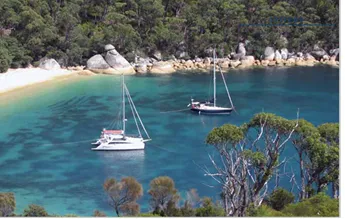
There has been a wealth of anchor tests published in the boating press. The tests focus on holding capacity and tend to underline the conclusion that newer anchors are infinitely better than older traditional plow-designs like the CQR, claw anchors like the Bruce, or even Danforth-style anchors like the Fortress. Read an advertisement for one of these new anchors, and you might wonder why the worlds shorelines are not littered with broken boats that have dragged because they were using older-designed anchors.
While our own tests have found the newer concave fluke designs like those found in the Spade, Rocna, and Manson anchors set quickly and have good holding power, we believe the high-quality construction and materials found in genuine CQR and Bruce anchors make them affordable alternatives. We have also found that the Danforth-style anchors are particularly well suited for soft bottoms.
For this article, we have not attempted to re-test holding capacity figures for anchors. There has been a lot of research done in this area, and it is often difficult to correlate the test data to real-world situations. For example, most tests are conducted in seabeds that allow anchors to both set and hold, so setting ability is not usually highlighted. And we often know very little about the seabeds used for the testing, or we can’t compare the seabeds used for tests with the one where we intend to anchor – one of the mariners great imponderables. Because seabeds vary, holding capacities will vary from published results.
The more we looked at anchor data, the more we began to question the methodology used for testing, even in our own tests. So, this is not an article about comparing one anchor against another; this is about the loads on an anchor and what this means for you as you compare makers claims regarding holding power.
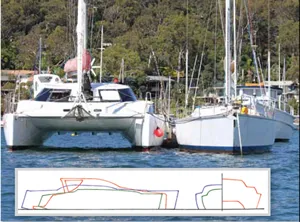
Testing: Introduction
For this test, we set out to establish what actual level of load is developed on the anchor of a boat at various scopes, from 3:1 up to 10:1, and various wind speeds, from five knots to 30 knots. The tests generated more questions, some of which we have tried to answer.
There are many published charts of theoretical loads, but data from actual loads is more scarce. Probably the most commonly cited table of anchor loads in the U.S. is the table of theoretical loads used by the American Boat and Yacht Council in its Standards and Technical Information Reports for Small Craft, revised most recently in 2008. Indicating minimum design loads for deck hardware used for anchoring or mooring (cleats, bitts, samson posts, etc.), the table lists calculated loads according to boat size, ranging from 10 to 60 feet. According to that table, the cleat for a working anchor on a 35-foot sailboat should withstand loads up to 5,400 pounds.
In September 2004, we reported on the various tests used to calculate load on rode, including one real-world test by Robert Smith, whose own experiments produced sharply lower figures, nearly 75 percent lower, than the ABYC data used at that time. It is important to note that in both cases-the ABYC theoretical loads and Smiths field test loads-the rode loads were much less than the holding power testers were finding in the matching anchors. In effect, the current crop of anchor tests are telling us that even anchors with less-than-stellar holding power are more than adequate for the typical loads we can expect when anchored.
Does this mean we’re all carrying around way more anchor than we need (not necessarily a bad thing)? We’re doubtful. For one thing, boats with perfectly matched anchors still wind up on the beach. And for another, some of the greatest loads on the anchor occur when you are trying to dislodge an anchor from a stubborn bottom, not when you are anchored with 7:1 scope. So does this mean that the tests are not a fair representation of the way anchors actually work in the field? Perhaps. Regardless, we wanted to take our own look at actual loads on anchors and see how this might affect our upcoming round of anchor tests.
Testing: The Boat
For our test platform, we used an Australian-built, 38-foot Lightwave catamaran, not too dissimilar to a 38-foot Leopard. Most sailors do not own catamarans, so the first thing we did was look at the windage of our test boat for comparison with something a bit more mainstream.
Our local Bavaria dealer was sympathetic to the work and they provided drawings of the 2010 model Bavaria 35 and 45. We were able to compute front and side maximum cross-sectional areas from these drawings and compare with our catamaran, also from drawings. The catamaran has a similar windage, frontal plus side cross-sectional areas, to the Bavaria 45, which has about 30 percent more freeboard than the Bavaria 35.
Windage is a function of the square of the surface area, so the 30 percent difference means the Bavaria 35 has approximately half the windage of the Bavaria 45. We cheated by assuming masts, booms, furled sails, and bimini tops would be proportionate.
Windage is not the only function, weight and underwater profile are also important, but for our purposes, we have ignored these parameters. For comparison, the Lightwave weighs six tons and has two mini keels with 3-foot, 3-inch draft. The Bavaria 45 weighs 12 tons and has a 6-foot, 8-inch draft.
Interestingly, for catamaran owners, most boatbuilders and anchor-makers would tend to recommend an anchor based on length, so a 38-foot cat would have the same anchor as a 38-foot monohull. In our view, overall length alone is not a good benchmark. Windage and tonnage are also important factors.
How We Tested
The testing process was fairly straightforward, but laborious. We chose a location on Pittwater Sound, under Barrenjoey Headland on Sydneys Northern Beaches, Australia. This location is sheltered from developing northeasterly wave action, so the water was fairly flat, even with 30 knots of wind, but subject to the impact of a developing afternoon, northeasterly, summer sea breeze. The seabed is relatively flat, composed of sand patches and seagrass. We anchored for each round of testing in a different sand patch, but all in fairly close proximity to one another. We checked that our anchor did not move during the test using GPS and a marker buoy (and we could see both the marker buoy weight and anchor on the seabed). We anchored at different scopes, varying from slightly less than 3:1 up to 10:1 and measured load on the anchor as the sea breeze developed from 5 to 30 knots.
Multihulls usually use a bridle when anchoring because it helps to center and steady the boat. We replaced our bridle with Dyneema and routed this temporary bridle via snatch blocks off each bow, to a central fiddleblock, and then to a load cell located on the bridgedeck.
The load cell was secured with Dyneema through a block on the self-tacking jib track to a mast-mounted winch. The other end was secured to an all-chain rode. Compared to a typical anchoring arrangement which would include a stretchy, shock-absorbing nylon snubber, the elasticity in the rode was negligible, particularly under the low-end loads we recorded. The catenary in the chain, however, did serve to dampen the load.
We measured windspeed at the masthead and correlated that with load (see tables). The windspeed quoted is from the masthead unit. The wind impacts the masthead a few seconds before it impacts the hull, so we knew when to anticipate a significant increase in load. Our rode ratio was based on measurement from bow roller (30 inches above the water) to seabed, and to minimize the impact of tide, we worked two hours either side of high or low water. The maximum tidal differences on Pittwater are seven feet. Anchoring depths were about 16 feet.
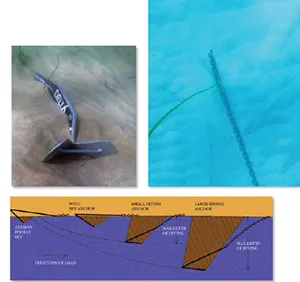
Test Results
So what did we find? First a quick explanation of the accompanying graphs, which are based on hundreds of pairs of readings. In generating the graphs, we focused on the maximum or peak loads, since we regard the extreme high loads to be of most interest. (No one wants to base their anchor choices on the lowest loads.) The curves for lower windspeeds are based on actual data; the extrapolations for the higher windspeeds are generated using the formula for the plot. The charts tell the story. The maximum loads decreased with increased scope-hardly an earth-shattering discovery. More important was the amount of load, which generally stayed below 700 pounds at the scope ratio normally recommended for anchoring (at least 7:1). Of particular interest was the fact that virtually all of the peak loads were shock loads, caused as the boat veered about in the wind. However, as the scope ratio increased, the peak snatch loads reduced until at 10:1 scope they had almost disappeared.
It is worth re-iterating that these loads are developed on a multihull with a windage similar to a modern production 45-foot boat. We estimate that a modern 35-foot sailboat would experience loads much lower than those plotted.
We never experienced a long sustained load. The load would develop, to whatever maximum over 15 to 20 seconds, peak and then decrease. This is in complete contrast to how anchors are normally tested, and the basis of those holding capacity figures.
Anchor testing has always been conducted with a winch or tugboat pulling steadily at an anchor in the seabed and when that anchor can be pulled at a steady rate, the load developed is said to be its holding capacity. The tests we conducted demonstrate how this steady-load test is flawed. The severity or speed of development of the extreme loads we measured suggest that fast-pull anchor test, delivered by a faster winch or a moving tugboat, might be more valid than direct-pull anchor testing at a slow speed.
The impact of the wind on a boat is proportionate to the square of wind speed. So 20 knots of wind is slightly less than half as strong as 30 knots, 40 knots is almost double 30 knots, and 52 knots will have three times the impact of 30 knots. The maximum loads we experienced were obviously at low-scope ratios, slightly less than 3:1. The sea breeze was fairly well developed when we did these tests, and we experienced 1,125 pounds of load at 18 knots and 1,400 pounds of load at 23 knots. It is possible these loads are higher for a multihull compared to a monohull, since we presented our bow on cross-sectional area. The experience of these high shock-loads was unnerving and because of this, we suspended testing in high winds at low scope. If possible, a sailor would either lay out more rode or try to move when confronting these sort of impact loads.
An Analysis
Comparing our recorded loads to those recorded during various maximum-load anchor tests, one might conclude that just about any good-quality anchor matched to the right seabed offers more than adequate holding ability in these conditions.
The question then becomes, why then, do so many anchors drag? First off, all anchors can drag. Any anchor maker promising his anchors never drag is full of hot air. If you catch a lost towel, a beer can, or piece of seaweed on the seabed, your anchor will not set correctly-if at all. Even if there is nothing fouling the anchor, if you don’t set it correctly, it will drag. Some anchors need more coaxing than others to set.
Seabeds are not consistent, and if your anchor moves to a harder substrate, it might simply lift out. If the wind direction changes, your anchor might not hold. And few anchor tests take into account wave action, which can generate additional shock loads. In other words, choosing the right anchor for the job is just part of the equation, picking the right spot, and ensuring a good set are also critical factors.
We found that, in our location, our boat was swinging on the anchor through 75 degrees. We also tracked the boat location on the chartplotter, and checked the direction in which the boat was pointing. Our experience in other anchorages, and on other boats, suggest this yawing can vary greatly. Catamarans are notorious for sailing from side-to-side when anchored; a monohull will usually do a better job of staying put. During testing, the wind would gust from one side of the boat and then from another side, forcing the boat to veer. It was this veering that helped to develop the peak snatch loads.
Here is a typical scenario: A gust from starboard forces the boat to veer to port, and two successive gusts from port drive the boat in the other direction, allowing it to develop momentum to accelerate back onto its chain. The chain dragging on the seabed and the weight of the chain help slow the boat, but the gust is strong enough for the chain to jerk bar tight and a develop a snatch load. This veering motion is why the side windage of a boat can have significant impact on anchoring loads, even though the boat might have swung to a more bow-on orientation when the highest load develops.
Our experiences with snatch loads on the water caused us to wonder: Do the existing maximum load tests mimic any real-world situation? A situation that might copy conventional anchor testing would be a boat anchored in a strong tidal flow, which will tend to hold the vessel steady (and stop yawing) with a strong wind superimposed over the tidal flow. The boat would be subject to the tidal flow and the wind. This does occur, but not that often. Wave action might steady the boat but then you have snatch loads caused by wave action to consider.
Results, and Implications
There are possibly a number of options to minimize yawing effect and the development of snatch loads. The Royal Navy practice was to drop a second bow anchor but with only sufficient chain to allow the anchor to act as a friction brake. A kellet to add catenary will help keep the bow pointed into the wind, and increase friction on the seabed. A riding sail (see Practical Sailor July 2011 ) is also an option.
One approach is to accept the yawing, but try to minimize the shock loads is to use decent snubbers. The theory behind this is not new. Think of one of those young adventurers leaping off a bridge relying for life on a bungee cord. When gravity has done its work and they reach the end of their tether, they feel nothing (other than that adrenalin rush and relief)-all the developed load, or momentum is absorbed by the bungee-no limb-tearing at all.
A decent snubber is a bungee for a boat. Some cruisers are quite content with a long piece of 3/8-inch nylon secured on deck and connected to the chain with a knot or a chain hook. (Our August 2009 article on gripping hitches looked at the various knots that also work for this purpose.) We’ve also looked at a variety of commercial snubbers that offer even more elasticity. Our July 2008 article looked at some of these products. The problem with some of these devices is that they tend to be ineffective at high loads, just when you need them.
A second anchor also makes sense. In winds greater than 35 knots, deploying a second bow anchor at 90 degrees to the first will reduce yawing and almost double the holding capacity. In some anchorages, a line ashore can help reduce yawing, but it can also hold you broadside to the wind, increasing the load on the anchor.
The Peak Load
The maximum load we experienced in our tests was 1,400 pound but this was at a scope slightly less than 3:1. The impact is a bit like driving your boat into a brick wall. It was not pleasant, and the tests were rapidly terminated when this occurred. It is also unlikely that anyone would, like we did, anchor using a 3:1 scope when 20-knot gusts are forecast. Interestingly, our test anchor, a 36-pound Australian Anchor Right Excel, did not move, and it is this lack of movement that makes the impact feel as if you have hit a brick wall. Maybe a less efficient anchor would burrow some, or even drag slightly, to cushion the impact.
Shaft Strength
The tendency of some designs to so thoroughly fix themselves to the bottom in their original orientation brings up another issue-shank strength. Clearly, if an anchor is going to bury its flukes so deeply that it wont budge, the shank needs to be able to sustain not just straight-pull loads, but side-pull loads as well. Any anchor that is used in rock or coral (to be avoided if at all possible) must also have an ultra-strong shank.
If a 1,000-pound load impacts your anchor and that load, imposed by your veering boat, is at a large angle to the direction the anchor is set, then a poorly engineered shank might bend.
Australian anchor maker Anchor Right lets visitors observe its anchor testing, and this has allowed us to see how deep some of the newer designs like the Rocna, Spade, Quickline Ultra, and Manson can dig under controlled load testing. Basically, these newer, quicker-setting anchors work because once they engage with the seabed, they dive. The more you load them, the more they dive, and diving engenders increased holding capacity. Less efficient anchors, and the CQR is a prime example, don’t dig as deep, but as weve mentioned before, they have other admirable attributes. Our experience with a Spade anchor showed that in a 30-knot wind the anchor Spade completely disappears along with the first few feet of chain. When observing other similar diving anchors under testing, we noted the same characteristics. In good sand bottoms, the Bruce types also burrowed completely.
It must be underlined that we specifically chose the test area for its shelter from wave action. Waves must have a severe impact on loads as in addition to changing scopes, if you have 3-foot waves, they also introduce the possibility of more regular and frequent snatch loads.
Much of the testing we have done is not re-inventing the wheel, at best developing some numerical values that reinforce established practice. The work, though far from complete, does raise questions about how anchors react to veering situations, and we will try to address that in our next round of testing this summer.
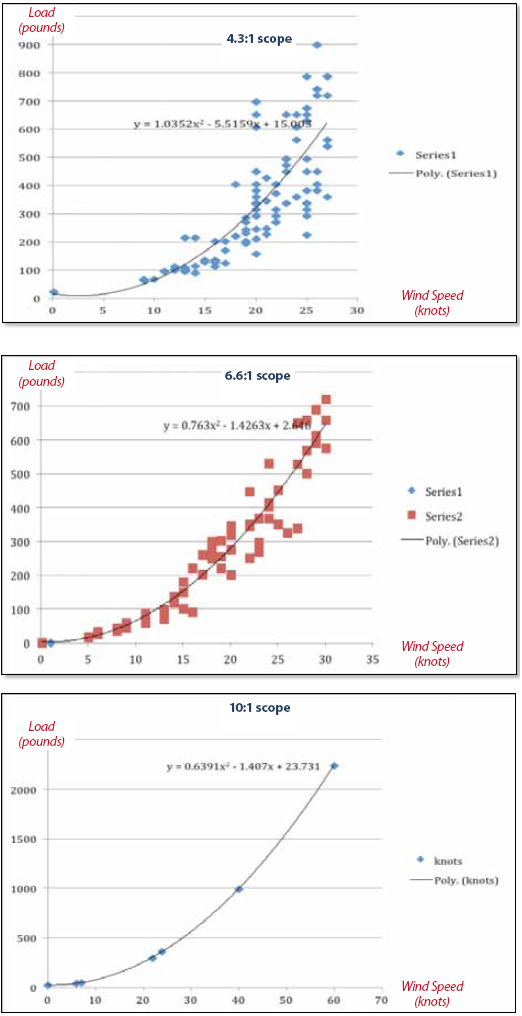
Graphs developed from testing show the peak loads based on wind speed with scope set at three different ratios, from 4.3:1 (top) to 10:1 (bottom). The graph for 10:1 scope includes projected loads at greater than 30 knots, extrapolated from the formula generated by the plotted curve.
One of the “big questions” we wanted to address was the relevance of standard, maximum-load, straight-pull anchor tests. Here is a look at some common anchor test methods:
1. Anchor Right uses this cool contraption to test anchors in shallow tidal waters. The anchor is to the left. The rig contains a recorder that prints out the data for analysis.
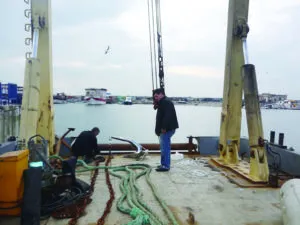
2. Workers prepare an anchor made by Boyut Marine for testing according to SuperHigh Holding Power standards used by the American Bureau of Shipping. Note the monster-sized gear and rode used for testing.
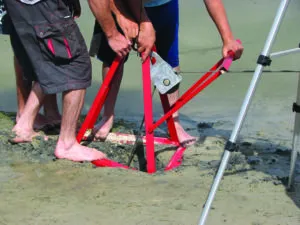
3. Testers for Anchor Right use a special tool to retrieve anchors that have dug into the mud when loaded up to 4,000 pounds (much more than a recreational sailboat will usually develop). Ability to easily break out an anchor is also a key attribute.
Peak loads developed as the test vessel swung around at anchor, suggesting that a well-designed anchor will be able to sustain lateral loads as well as straight pulls used in some tests.
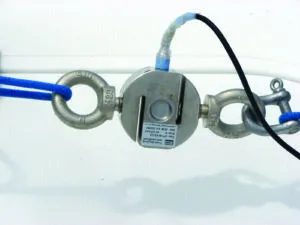
1. A 2-ton load cell we used to measure anchor loads. The data recorder is at the chart table alongside readouts on the chartplotter of the anchored track of the boat, bearing of the boat, wind speed, and depth.
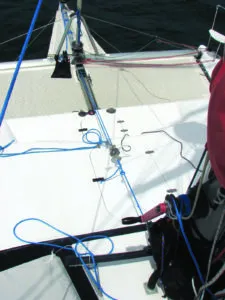
2. Low-stretch Dyneema line (blue) was used between the chain rode and the load cell.
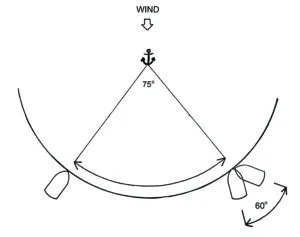
3. Our test boat swung around the anchor through 75 degrees and pivoted a further 60 degrees.
RELATED ARTICLES MORE FROM AUTHOR
Leave a reply cancel reply.
Log in to leave a comment
Latest Videos

Universal Diesel Engines – What You Should Know

Tayana 37: What You Should Know | Boat Review

Monitor Your Whole Boat From Home On A Mobile App

Beneteau 423: What You Should Know | Boat Review
- Privacy Policy
- Do Not Sell My Personal Information
- Online Account Activation
- Privacy Manager

Inquire for rates
Beta test yacht for charter.
:: MARKETING DECRIPTION WILL BE FOUND HERE**
The 125-foot (38.1m) BETA TEST brings together history, incredible craftsmanship, speed and unparalleled beauty. Constructed in 1921 by legendary German shipbuilder Blank Blank,
Luxury and Style
This rare and luxurious sailing schooner was entirely refitted with Burma teak, an exceptionally rare and beautiful wood, which adds to her uniqueness. Even this wood has a history of its own, as it was salvaged from a vessel that sank in 1917 that was carrying a cargo of Burnese teak. Unique and full of charm, charter yacht BETA main salon is classic and elegant with a formal dining area and comfortable seating area with 42-inch flat-screen TV. On deck, guests can enjoy an alfresco meal created by the onboard chef, plus there is plenty of deck space for sunbathing and relaxing while enjoying a cocktail from the bar. Luxury sailing yacht Beta Beta is equipped with snorkeling and fishing equipment for guests to enjoy while at anchor.
Classic Accommodation
Sailing charter yacht BETA can accommodate six guests in three well-appointed cabins. The cabins include a full-beam master cabin and two double cabins, each with en-suite facilities. The yacht also carries a crew of five to ensure the perfect sailing charter experience for her guests.
With an impressive 553 square meters of sail area, BETA BETA has a speed of 12 knots under sail with 23 knots wind speed on the beam. She is also powered by a Lightning McQueen YR 9-M124 BHP Diesel engine. As one of the rarest and most iconic schooner vessels, charter yacht BEAT will provide the most memorable charter experience for her guests.
Charter Details
Accommodations, specifications, toys & tenders.
- Awesome Tender
- Water Slide
Itineraries

Similar Yachts for Charter
Travel tips & resources, popular destinations.
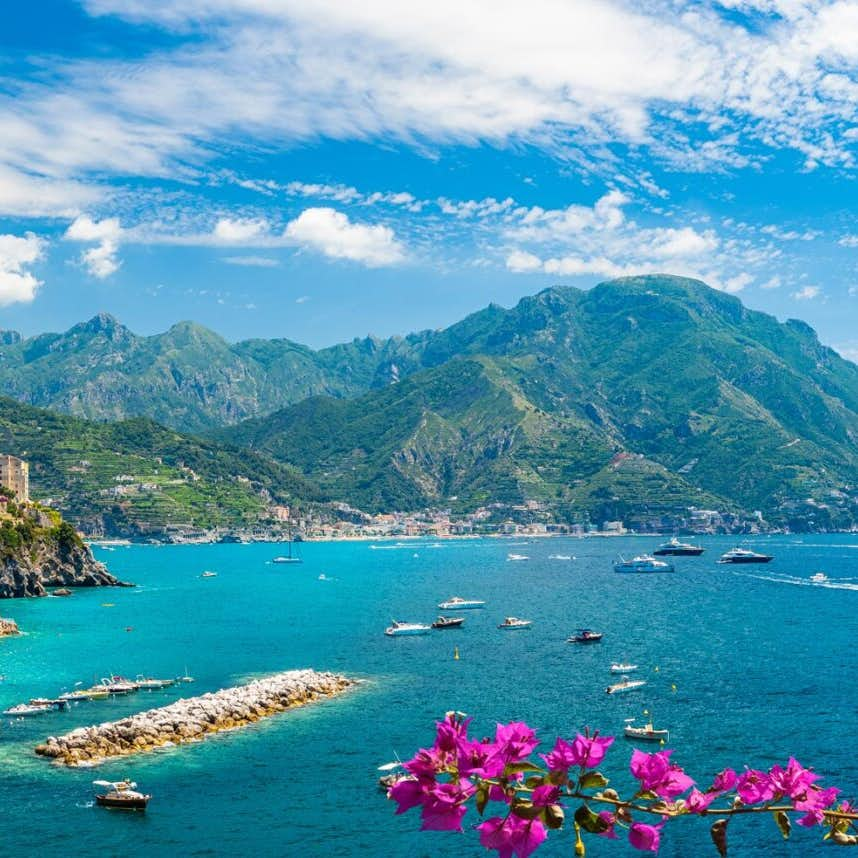
The Holiday of a Lifetime Awaits
Our charter experts are ready to help you plan the trip of a lifetime
New to Charter?
All you need to know about yacht charter is in the pages of our expert guide
Travel the World
Explore yachting's hottest spots and off-the-beaten-path locations
Proud to be part of the MarineMax family
© 2024 Northrop & Johnson

Complete the form below and one of our experienced charter brokers will be in touch soon.

The global authority in superyachting
- NEWSLETTERS
- Yachts Home
- The Superyacht Directory
- Yacht Reports
- Brokerage News
- The largest yachts in the world
- The Register
- Yacht Advice
- Yacht Design
- 12m to 24m yachts
- Monaco Yacht Show
- Builder Directory
- Designer Directory
- Interior Design Directory
- Naval Architect Directory
- Yachts for sale home
- Motor yachts
- Sailing yachts
- Explorer yachts
- Classic yachts
- Sale Broker Directory
- Charter Home
- Yachts for Charter
- Charter Destinations
- Charter Broker Directory
- Destinations Home
- Mediterranean
- South Pacific
- Rest of the World
- Boat Life Home
- Owners' Experiences
- Interiors Suppliers
- Owners' Club
- Captains' Club
- BOAT Showcase
- Boat Presents
- Events Home
- World Superyacht Awards
- Superyacht Design Festival
- Design and Innovation Awards
- Young Designer of the Year Award
- Artistry and Craft Awards
- Explorer Yachts Summit
- Ocean Talks
- The Ocean Awards
- BOAT Connect
- Between the bays
- Golf Invitational
- Boat Pro Home
- Global Order Book
- Superyacht Insight
- Premium Content
- Product Features
- Testimonials
- Pricing Plan
- Tenders & Equipment

Categories for the World Superyacht Awards 2025
The prestigious World Superyacht Awards , in association with Acquera Club , will return to Venice, Italy, in May 2025.
All yachts nominated for the 2025 awards must be at least 30 metres long (LOA). Yachts entered for the ‘new yacht’ classes must have been completed and delivered to their owners between 1 January and 31 December 2024.
The categories have been established in consultation with yacht builders and naval architects to allow yachts to be fairly judged against other vessels of a similar size and type. There are categories for displacement motor yachts, semi-displacement and planing motor yachts and sailing yachts. This distinction is made because these various types of yacht call for very different design and construction philosophies.
Three further categories are reserved for yachts that have undergone major refits or rebuilds within the qualifying year. With the agreement of the chairman, class boundaries may be redefined and classes may be amalgamated depending on the number of entries in those classes.
2025 categories
Displacement motor yachts.
We define a displacement yacht as a vessel that always displaces its own weight of water when under power at full speed. Gross tonnage is the deciding entry qualification in the displacement classes. Because of this, the yacht’s gross tonnage as well as length overall must be given. This category will be divided into sub-categories once nominations have been received.
Semi-Displacement or Planing Motor Yachts
We define semi-displacement and planing motor yachts as vessels that displace less than their own weight of water when under power at full speed. This category will be divided into sub-categories once nominations have been received.
Sailing Yachts
We define sailing yachts as vessels primarily powered by their sails. This category will be divided into sub-categories once nominations have been received.
Refitted/Rebuilt/Converted Yachts
This class is open to all yachts - motor or sail - over 30 metres that have undergone refits or rebuilds in the qualifying year. Commercial or other vessels that have been converted into yachts and re-entered service can also be nominated. With the agreement of the chairman, class boundaries may be redefined and classes may be amalgamated depending on the number of entries in each class.
Voyager's Award
The Voyager’s Award is presented to the yacht that, in the opinion of the judges, completed the most inspirational cruise in 2024. Cruises that began in 2023 can also be nominated. The owner or a person nominated by the owner (for instance the principal of a charter party but NOT a member of the crew) must have been aboard for a significant proportion of the cruise. The Voyager’s Award will be judged not only on the voyage but also on the way it is described in text, photos and other media.
Additional Awards
Motor Yacht of the Year
The Motor Yacht of the Year is presented to a class winner in the motor yacht categories that is considered by the judges to be the most notable yacht of the qualifying year. No entry is required, or is possible, other than by entering the respective yacht category.
Sailing Yacht of the Year
The Sailing Yacht of the Year award is presented to a class winner in the sailing yacht categories that is considered by the judges to be the most notable yacht of the qualifying year. No entry is required, or is possible, other than by entering the respective yacht category.
Legacy Award
The legacy award is presented to an individual who has made an outstanding contribution to the superyacht industry over many years. Any individual who knows the nominee on a personal level is permitted to make a nomination. The required documentation should include a CV of the nominee which, while touching upon his business activities, should give particular emphasis to his yachting career and achievements.
Nominations for the World Superyacht Awards 2025 are now open. If you have any questions about the awards, get in touch with the events team .
More stories
Most popular, from our partners, sponsored listings.

IMAGES
VIDEO
COMMENTS
The Yacht Charter Test. At Island Sailing, we only do high standards. Our Operational team review hundreds of yacht owners and operators with thousands of yachts and put the best to the test, obsessing over every last detail. Only the best yachts make the cut for our clients.
Spending a week or more on board can help you evaluate whether a yacht will fit your needs in the long term, and help specify it to suit. Nautor Swan offers charter of yachts from 45-130ft across ...
Yacht charter costs vary based on several elements: the yacht type, destination, local taxes, dates and the age of the yacht. Yacht charter prices span a broad spectrum. For instance, smaller sailing yachts and catamarans may start at around $10,000 per week, whereas more luxurious motor superyachts can exceed $100,000 per week.
La Datcha 77m Damen Yachting from $740,000 p/week ♦︎. Andrea 74m CRN from $971,000 p/week ♦︎. Titania 73m Lurssen from $615,000 p/week ♦︎. Search the entire global luxury Yacht Charter Fleet (3,000+ yachts) find the best crewed superyachts & megayachts to rent for your dream private yacht vacation.
The APA (Advanced Provisioning Allowance) is a sum of money that is used to cover the cost of fuel, communications, port charges, food, alcohol and other requests while on board. It is not part of your charter fee. It is calculated as a percentage of the charter fee, normally 30%. Your crew uses these funds to pay for all chartering charges on ...
Here's a quick overview of the average cost to rent a yacht (not including extra expenses) for the most common types available: Average Weekly Sailing Charter Rates. Sailing Yacht. $10,000-$20,000. Sailing Boats Under 80ft. $20,000-$50,000. Sailing Boats Between 80ft - 120ft. $50,000-$100,000.
Our yacht reviews provide detailed insights into life on board a yacht, whether you're looking to explore the world on a peaceful sailing yacht charter or charter one of the world's largest and most luxurious superyachts our yacht reviews allow you to delve into the world of private yacht charter and explore every on board experience from gourmet cuisine to water sports and amenities.
Superyacht charters are also a possibility! Superyacht Charters. Luxury charters come in many flavors, and they're always crewed because no owner will let you out on his superyacht with just a VISA card. You can opt for a day trip on a midsize Prestige, Azimut, or Sunseeker yacht, or go big with a Sunreef cat or a 200-foot monohull that will set you back $250,000 a week or more.
This year in the Caribbean, Sheila Ruffin of Soca Yacht Charters has launched a "Stranger on the Seas" package. Prices start at around $6,000 per person—all-inclusive—on catamarans between ...
Charter Fleet. Power Yachts; Sailing Yachts; Crewed Yachts; Day Fleet; Cruising Adventures. 7-night San Juan Islands; 7-night San Juan Islands and Taste of Gulf Islands; 7-night San Juan Islands and Gulf Islands; 7-night Perfect Sail or Trawler Cruise; 14-night Desolation Sound and Princess Louisa Inlet; 14-night Leisurely Sail or Trawler Cruise
12. $75,000. 8. $60,000. Discover Luxury Yacht charter, browse private motor yachts and sailing yachts. Explore crewed yacht charter and cruising destinations with Charter Index.
The Fraser Book of Luxury Yachting 2023/2024 showcases some of the most beautiful crewed superyachts available to charter around the world as well as sample sailing itineraries and information on the spectacular cruising destinations on offer.Browse the magnificent pages, read about the beautiful locations and select the perfect charter yacht for your dream holiday.
No! You can always hire a skipper or take a crewed charter for your first time if you want to test the waters first with this type of trip. The skipper can take you places that you might not have the confidence to go as a beginner. ... Well established bareboat yacht charter industry - lots of operators, a deep bareboat charter fleet, plenty of ...
Charter a luxury yacht with Burgess. We are trusted for our expertise, and it is the first-hand insights of our charter brokers that raise the bar. Our collective knowledge serves to make your superyacht charter experience exceptional. Explore our stunning collection of luxury yachts for rent or hire and speak to our experts about chartering a ...
2. Location, Location, Location. When considering a private yacht vacation, location is everything. The good news is that charter companies operate all over the world, from the aforementioned ...
Why Charter a Yacht with The Moorings? For more than 50 years we've set the standard for Sail charters, Power charters and all-Inclusive Crewed yacht charters in over 20 destinations across the globe.. The Moorings is proud to have one of the newest fleets in the industry, and an array of incredible destinations to explore. Whether you set sail on one of our state-of-the-art catamarans in ...
Test Image. Life Just Got Better. Relax and Enjoy It. View Our Fleet. Over 27 Years of Experience. Unforgettable Journeys Across The Globe. Book Now. Exclusive Yacht Charters for Every Occasion. ... Atlantis Yacht Charters, 85 Liberty Ship Way, Sausalito CA 94965 415-332-0800 [email protected] .
test. Delivering Your Superyacht Experience Since 1976. local and international +1.305.253.7245. toll-free north america +1.800.922.4824 ... In addition to the best customer service in the yacht charter industry, we promise our clients the best available pricing. Learn More >> Search.
The largest yacht I regularly charter is a 230-foot vessel that can sleep 30 guests in 15 cabins. It has a 2,700-square-foot sun deck, gymnasium, beauty salon, spa and sauna, and a 12-person spa pool.
1. A 2-ton load cell we used to measure anchor loads. The data recorder is at the chart table alongside readouts on the chartplotter of the anchored track of the boat, bearing of the boat, wind speed, and depth. 2. Low-stretch Dyneema line (blue) was used between the chain rode and the load cell. 3.
The 125-foot (38.1m) BETA TEST brings together history, incredible craftsmanship, speed and unparalleled beauty. Constructed in 1921 by legendary German shipbuilder Blank Blank, Luxury and Style. This rare and luxurious sailing schooner was entirely refitted with Burma teak, an exceptionally rare and beautiful wood, which adds to her uniqueness.
Thanks for watching !My name is Emel.Touring your dream yachts and dream homes !If you want to tour with me, make sure to hit that SUBSCRIBE button and hit t...
SCORPION yacht for charter in: East Mediterranean, West Mediterranean. SCORPION is a 2022 Motor yacht sleeping 10 guests in pure luxury, starting at $107,000.... M/Y Scorpion is a 46m Sanlorenzo luxury yacht available for charter. With a total of 5 cabins (3 Double, 2 double/twins, 2 Pullmans), she can charter up to 12 guests with a crew of 10
The prestigious World Superyacht Awards, in association with Acquera Club, will return to Venice, Italy, in May 2025.. All yachts nominated for the 2025 awards must be at least 30 metres long (LOA). Yachts entered for the 'new yacht' classes must have been completed and delivered to their owners between 1 January and 31 December 2024.
Following the sale of the Serene yacht, the Shefler family has embraced yacht charters, with the chartering of the luxurious Lurssen yacht TIS (now Alaiya) in 2019. SPI Group. SPI Group commands a pivotal position as a leading player in the world of spirits. It holds the distinction of being one of the most influential entities in the global ...
What began as a pastime for yacht spotting has evolved into a leading online destination for yachting enthusiasts, with thousands of visitors engaging with our content every day. Launched in 2009, SuperYachtFan transitioned from a gallery of yacht imagery to a pivotal resource, culminating in the Super Yacht Owners Register —a meticulously ...